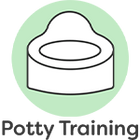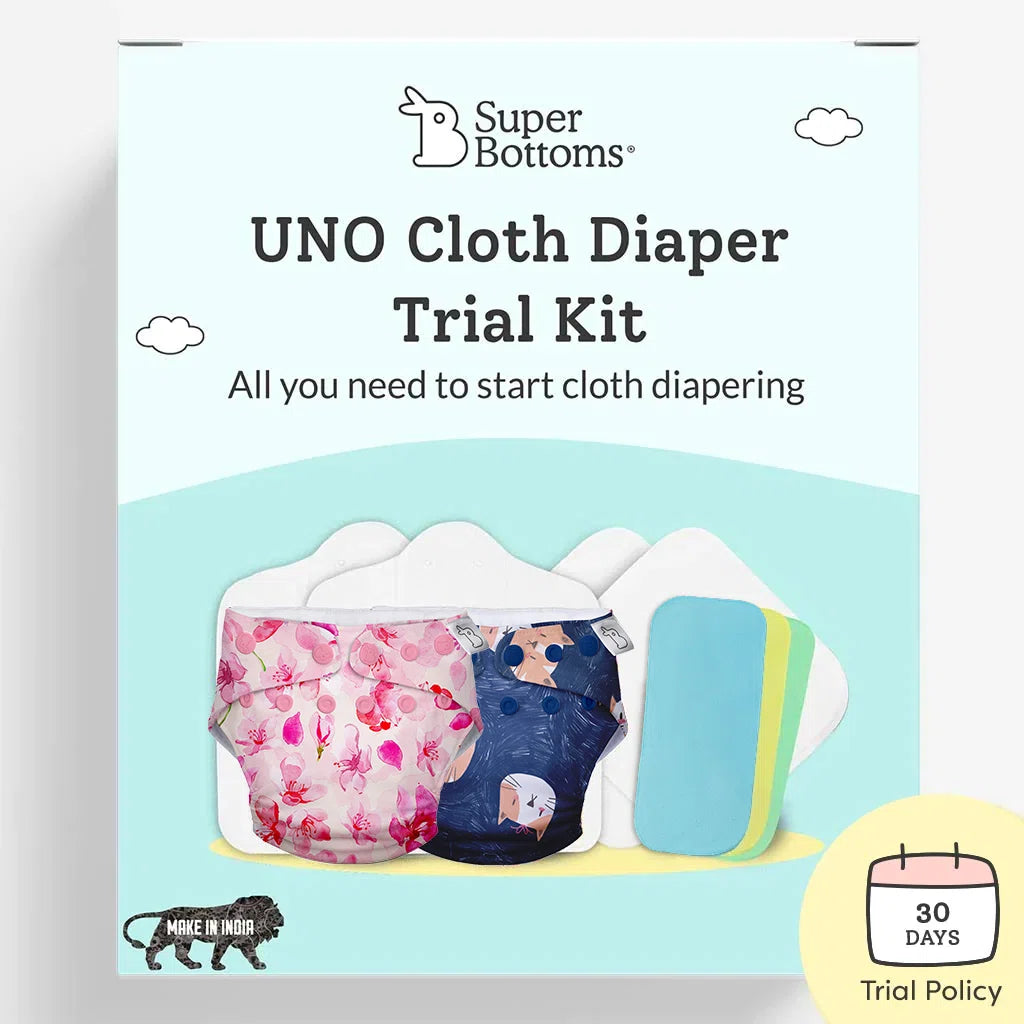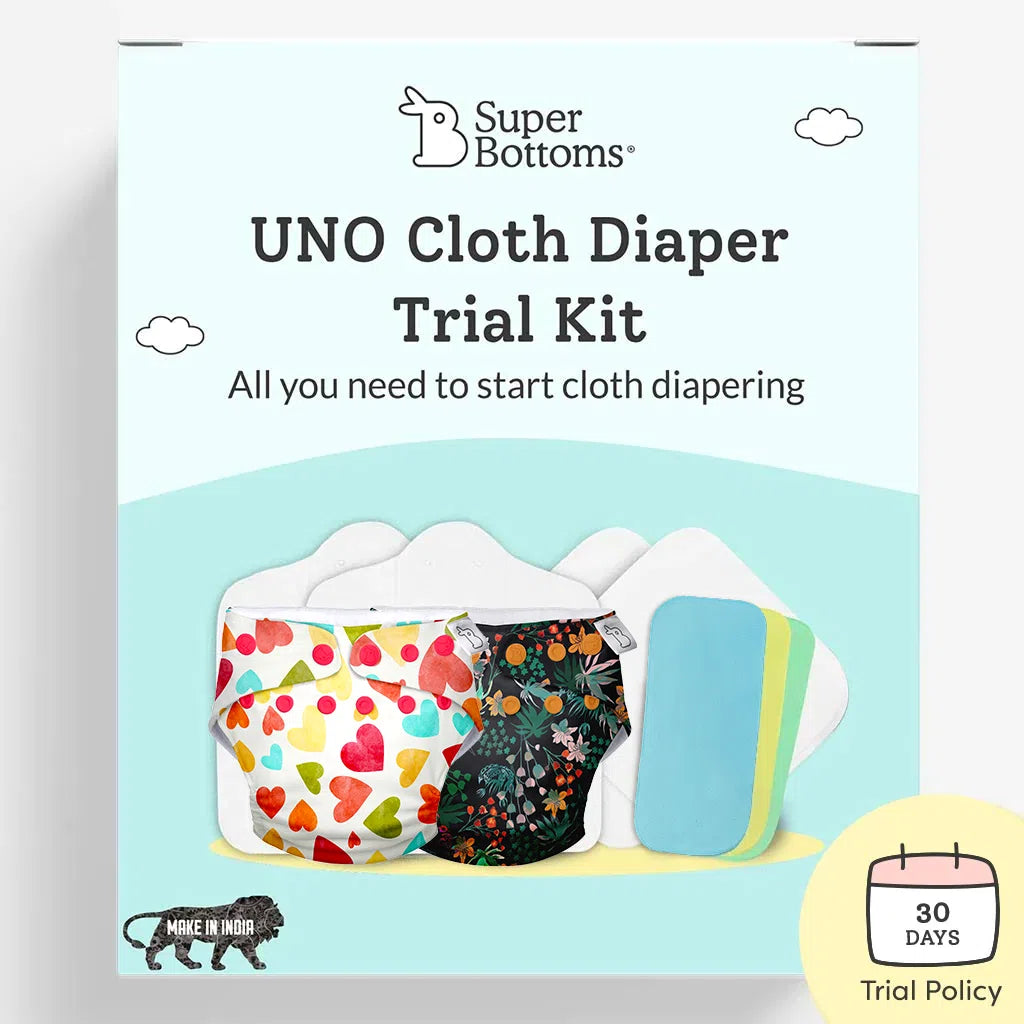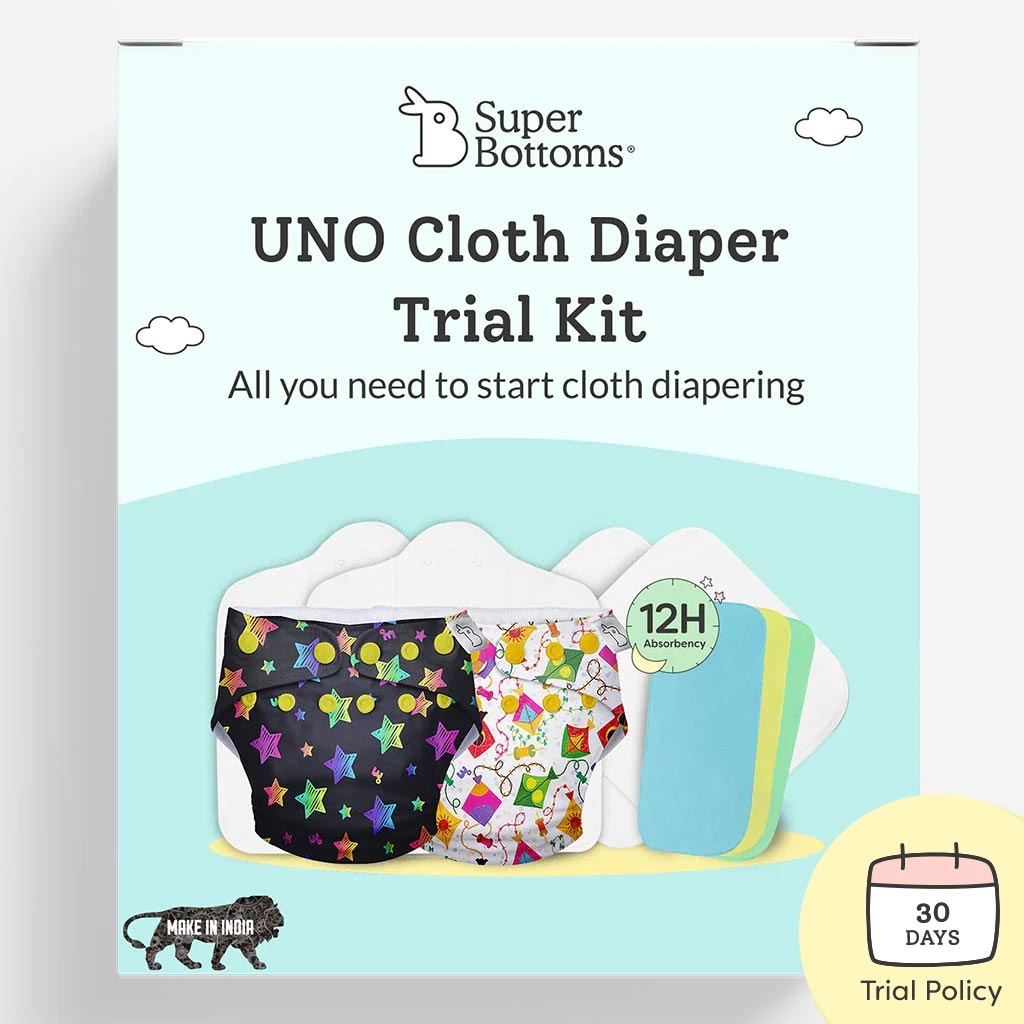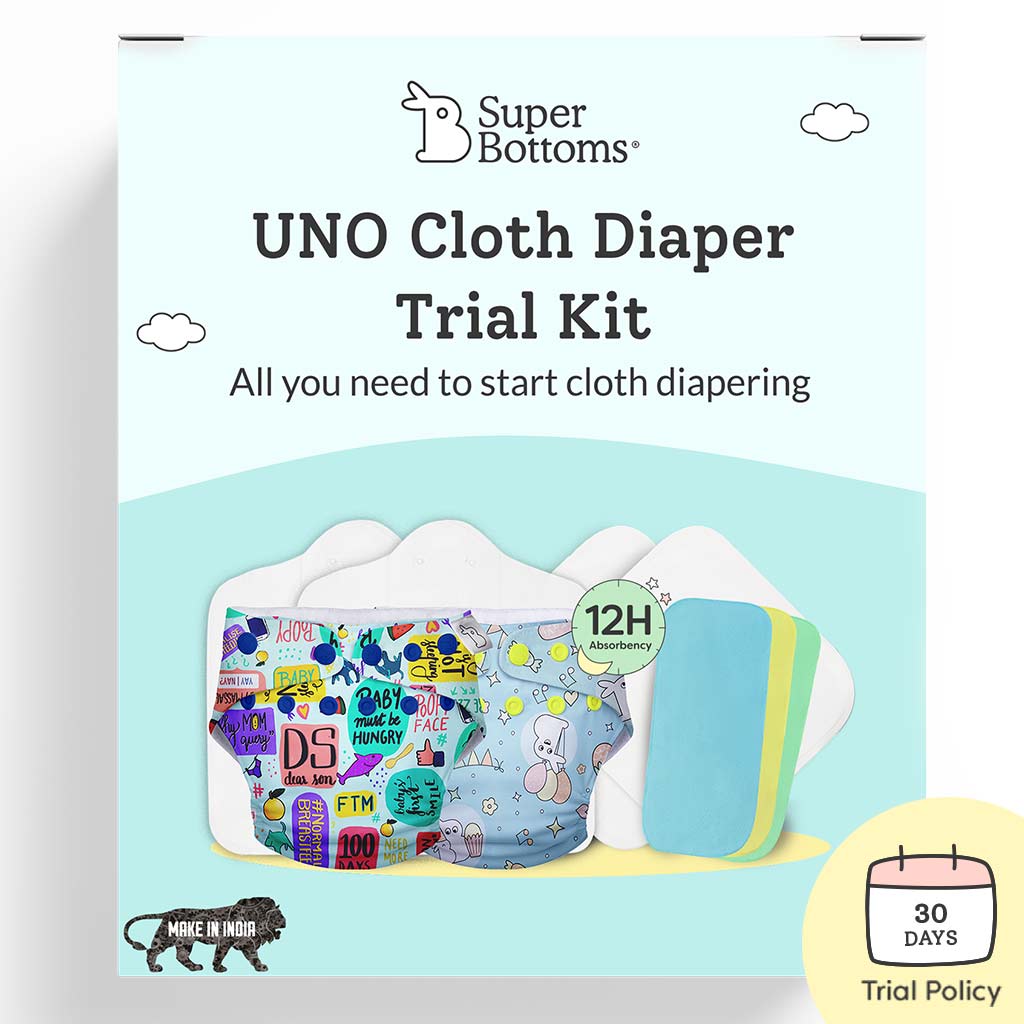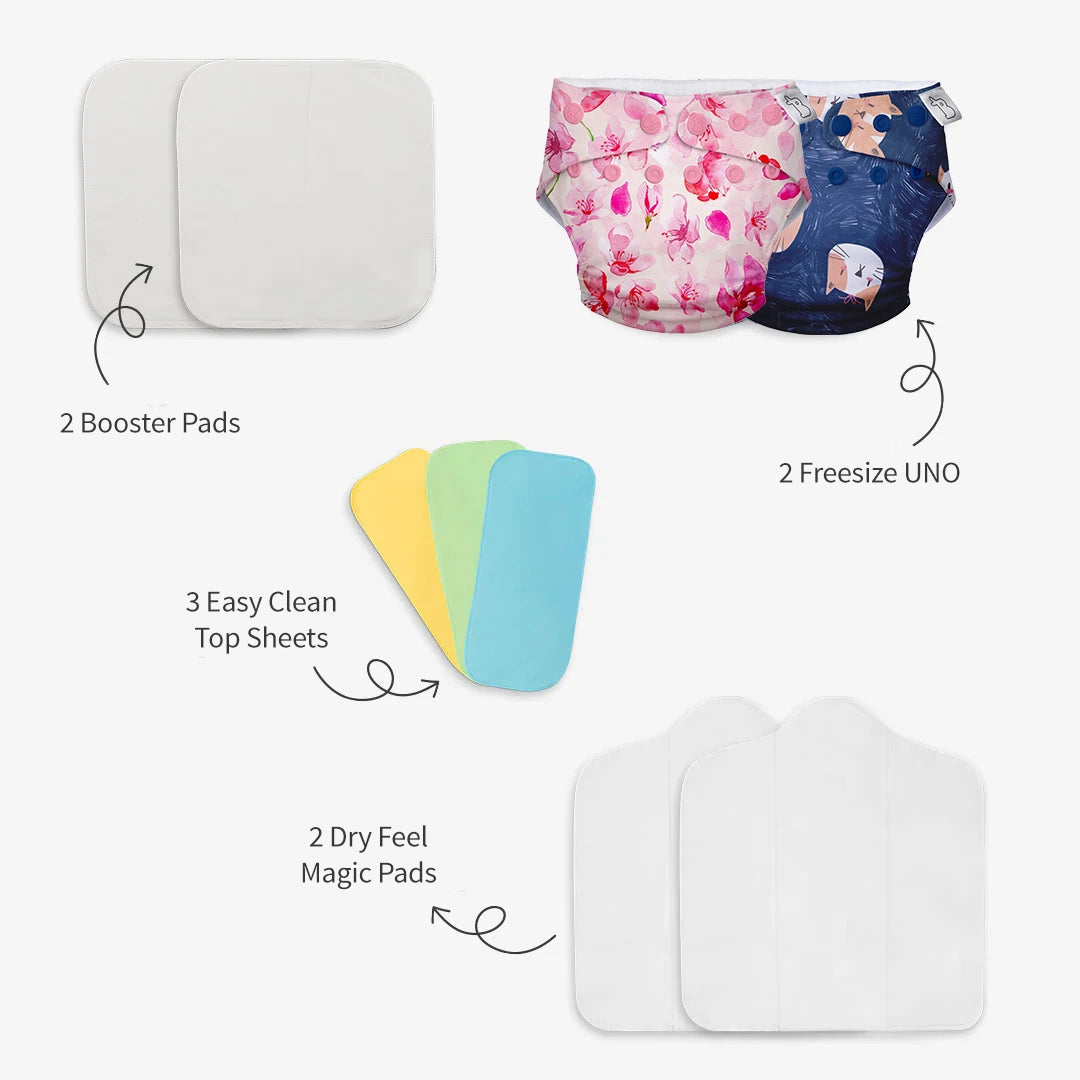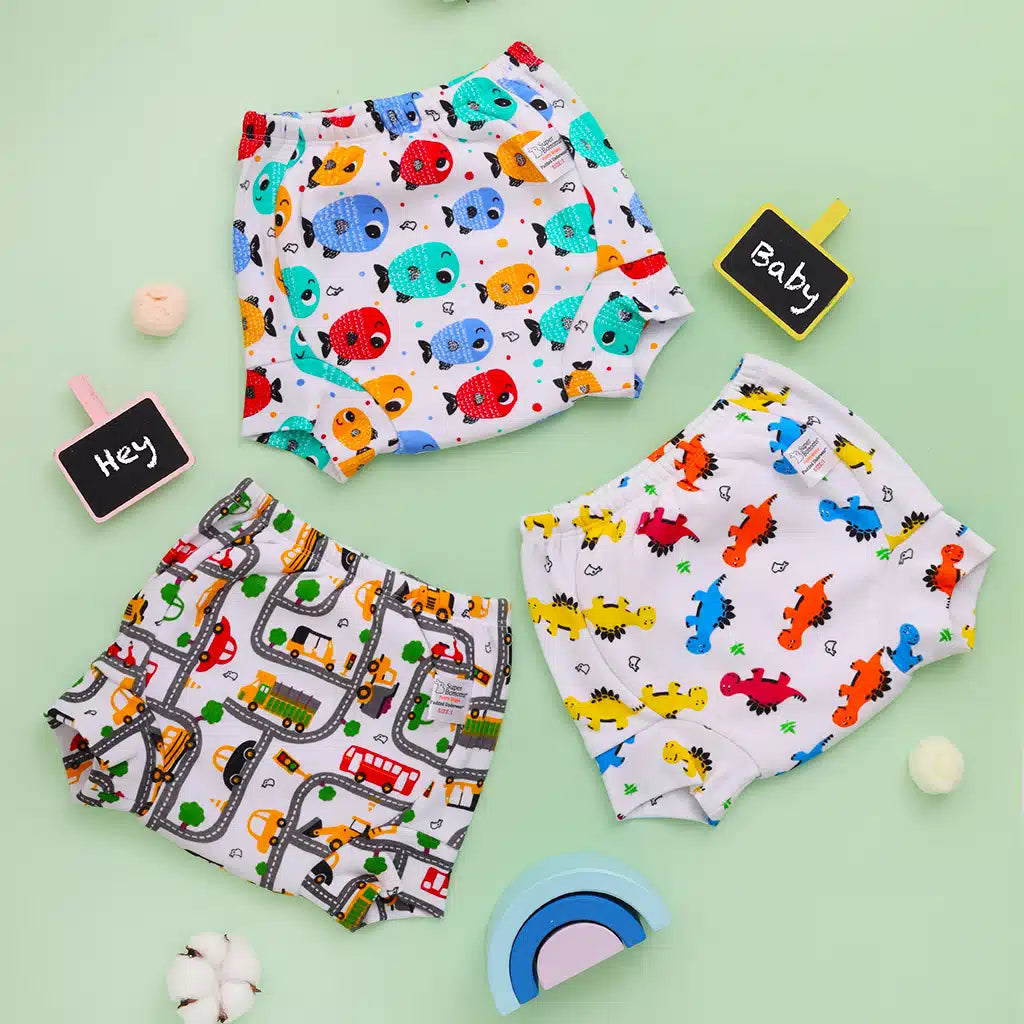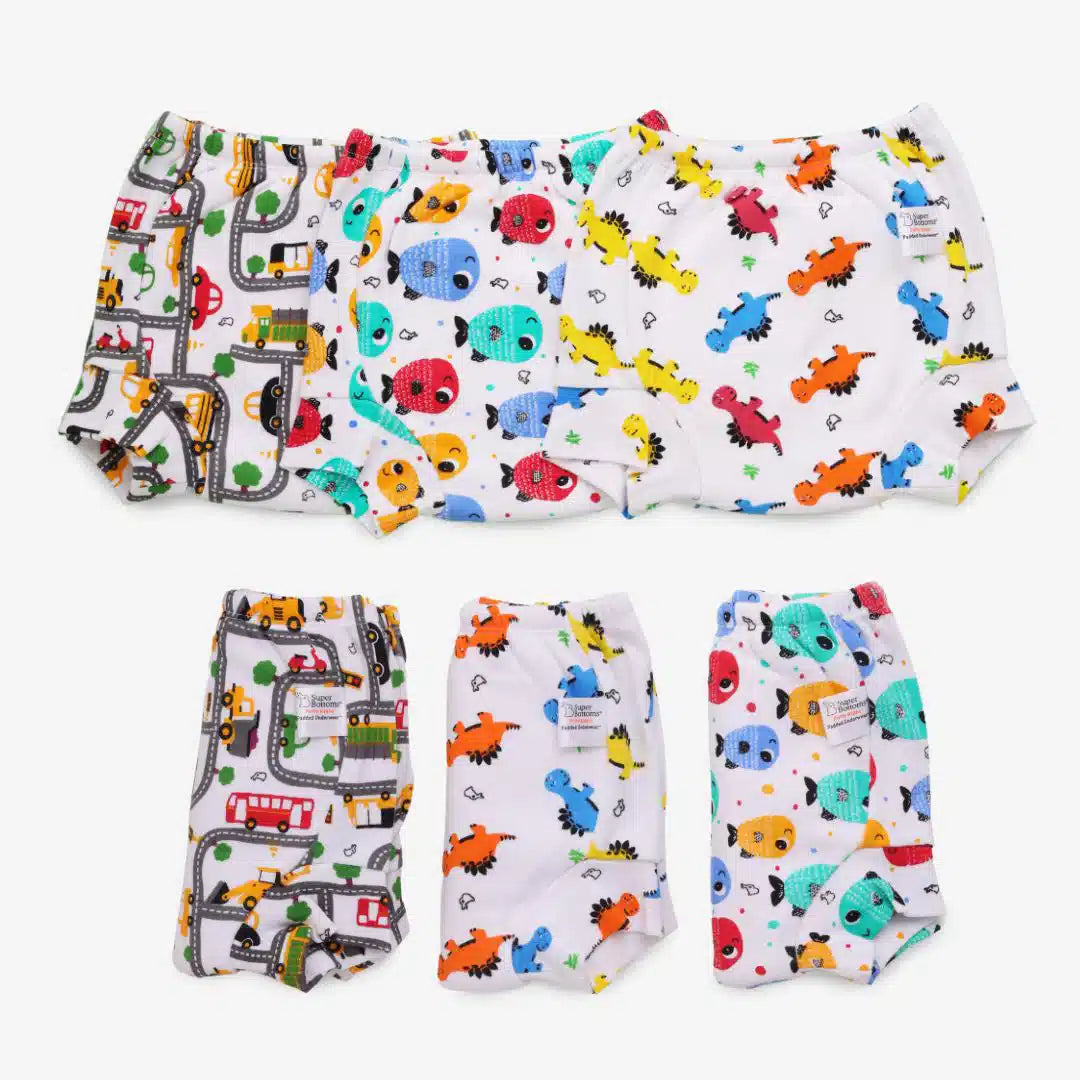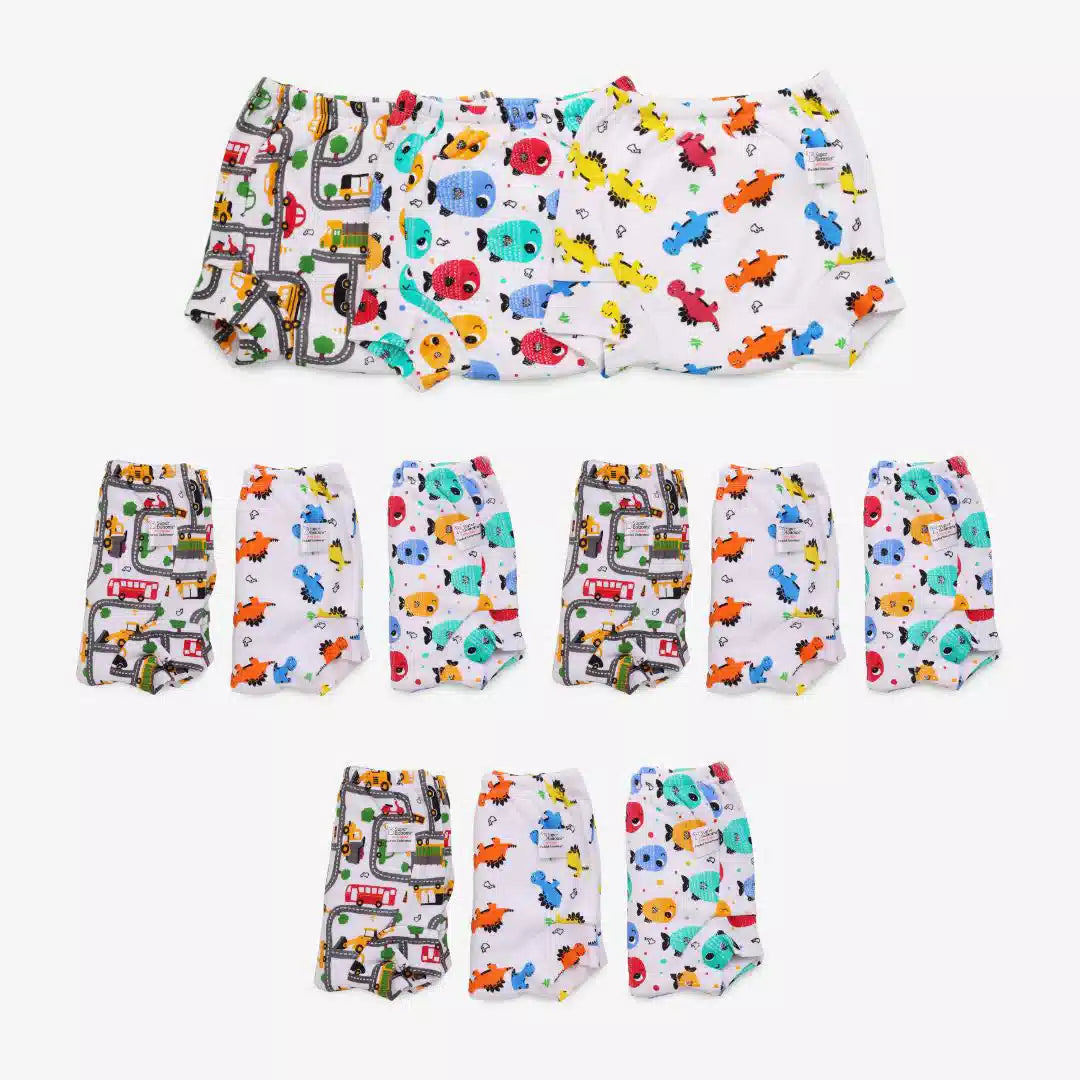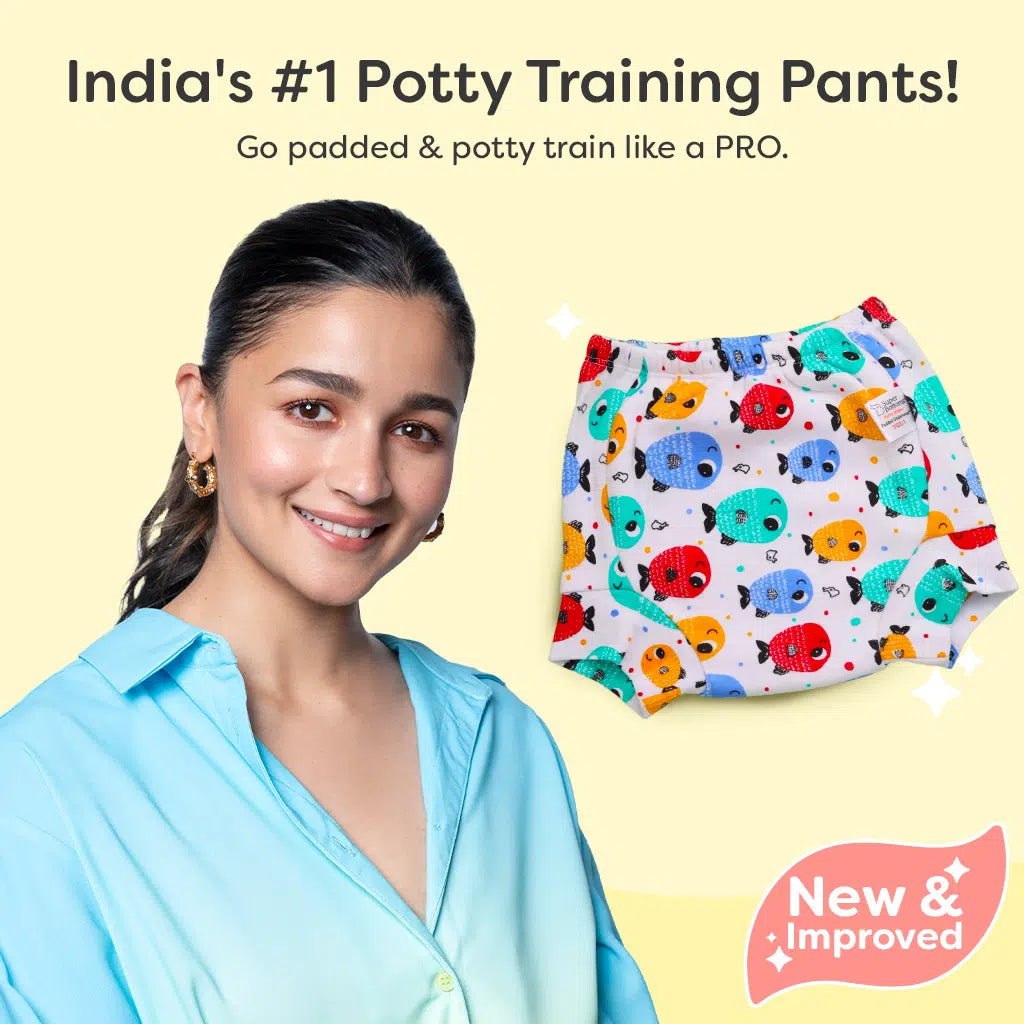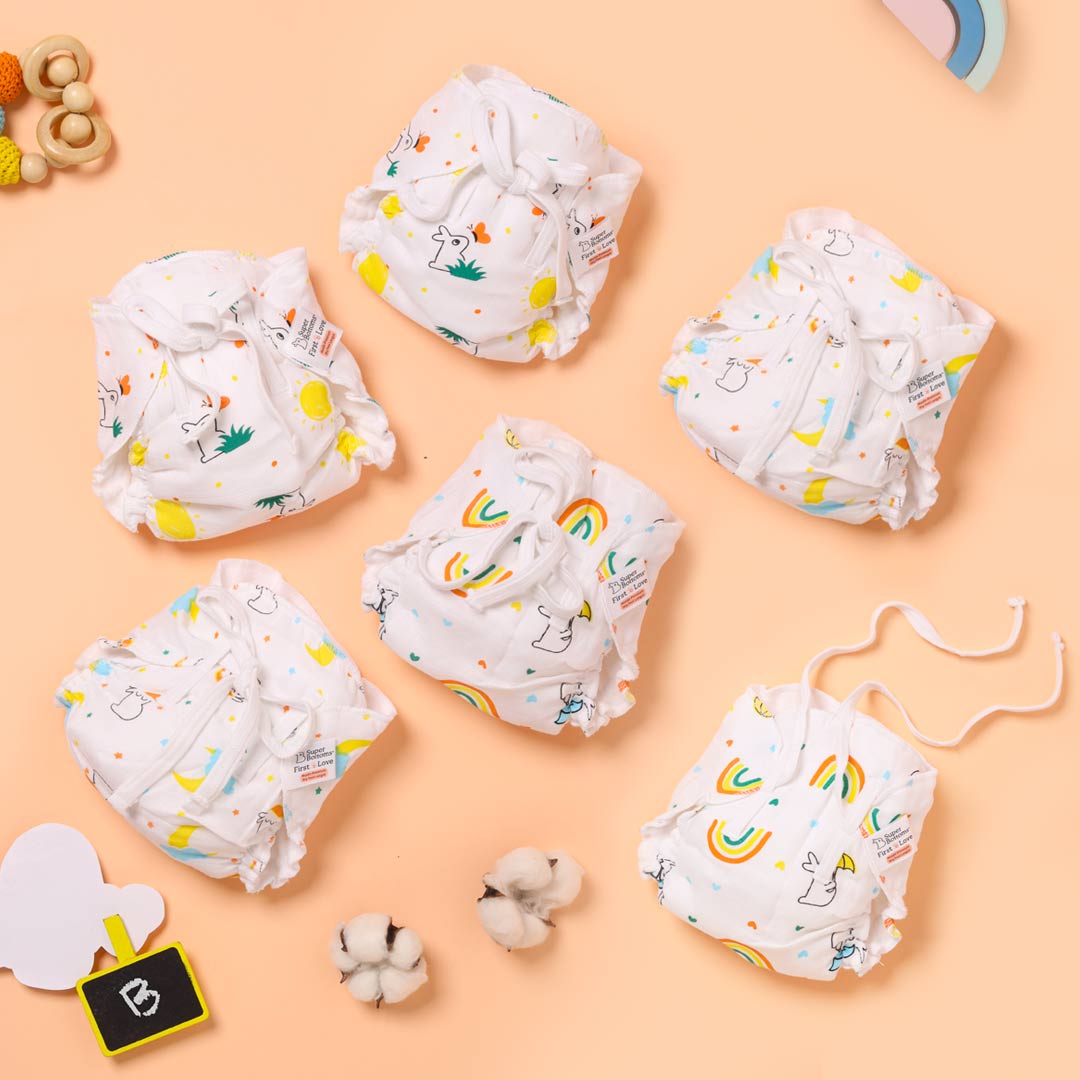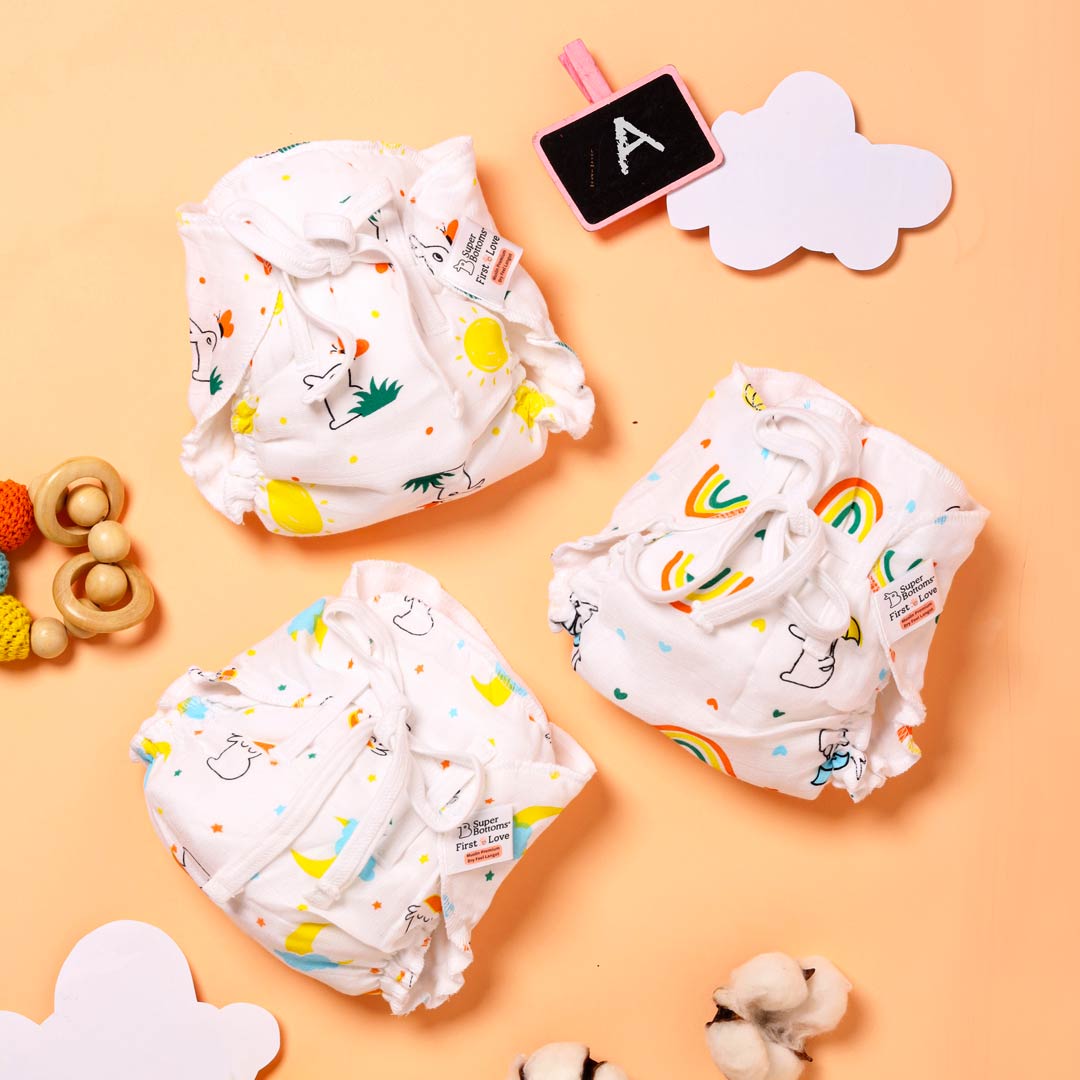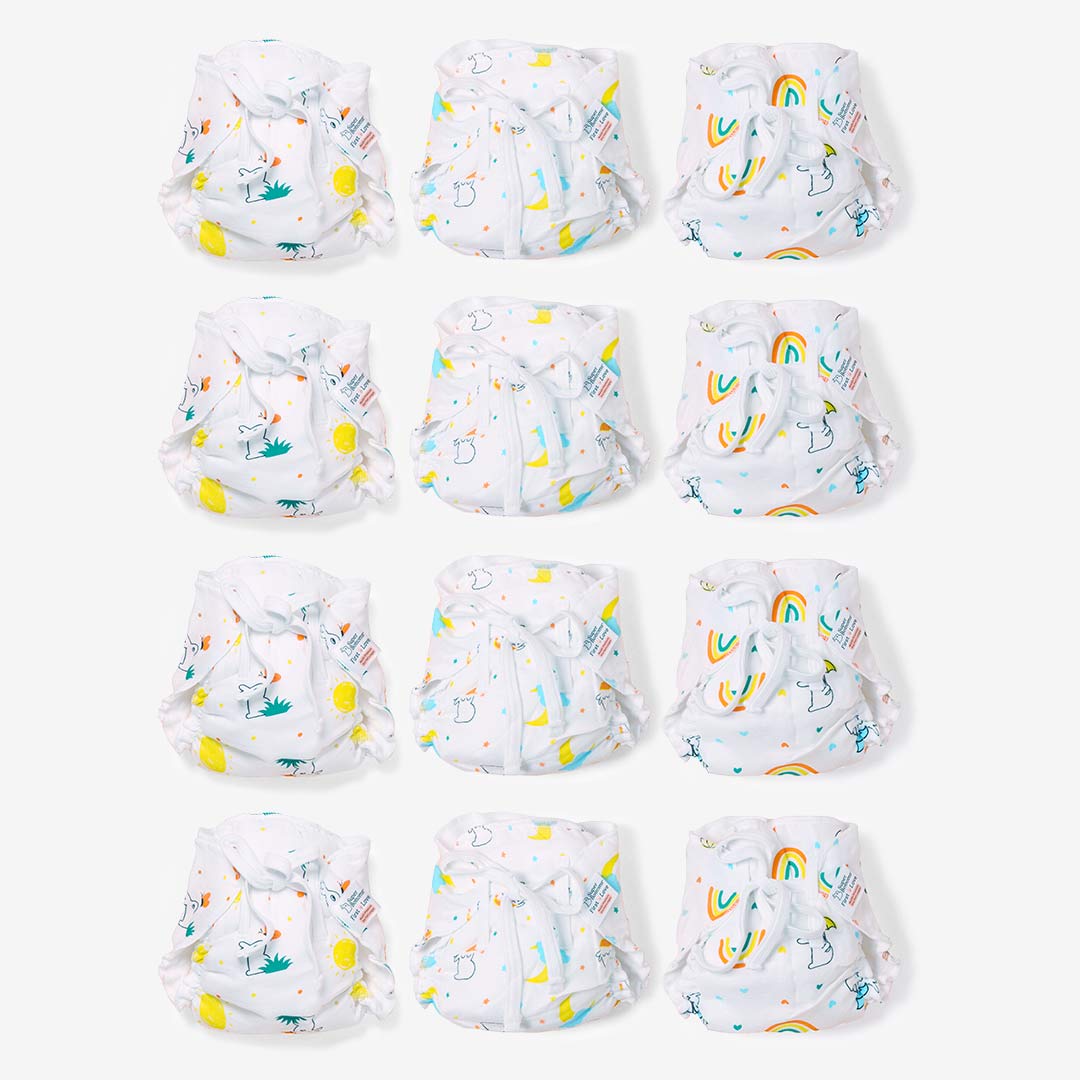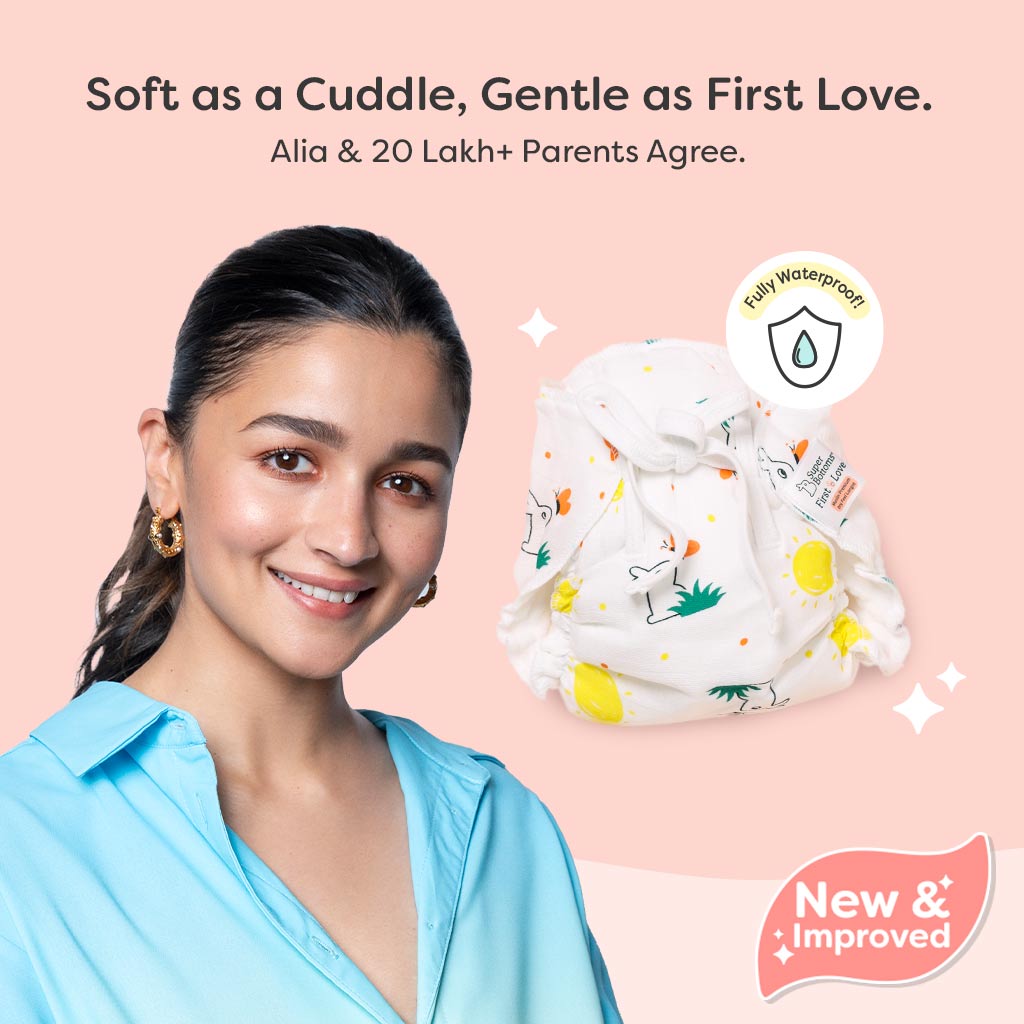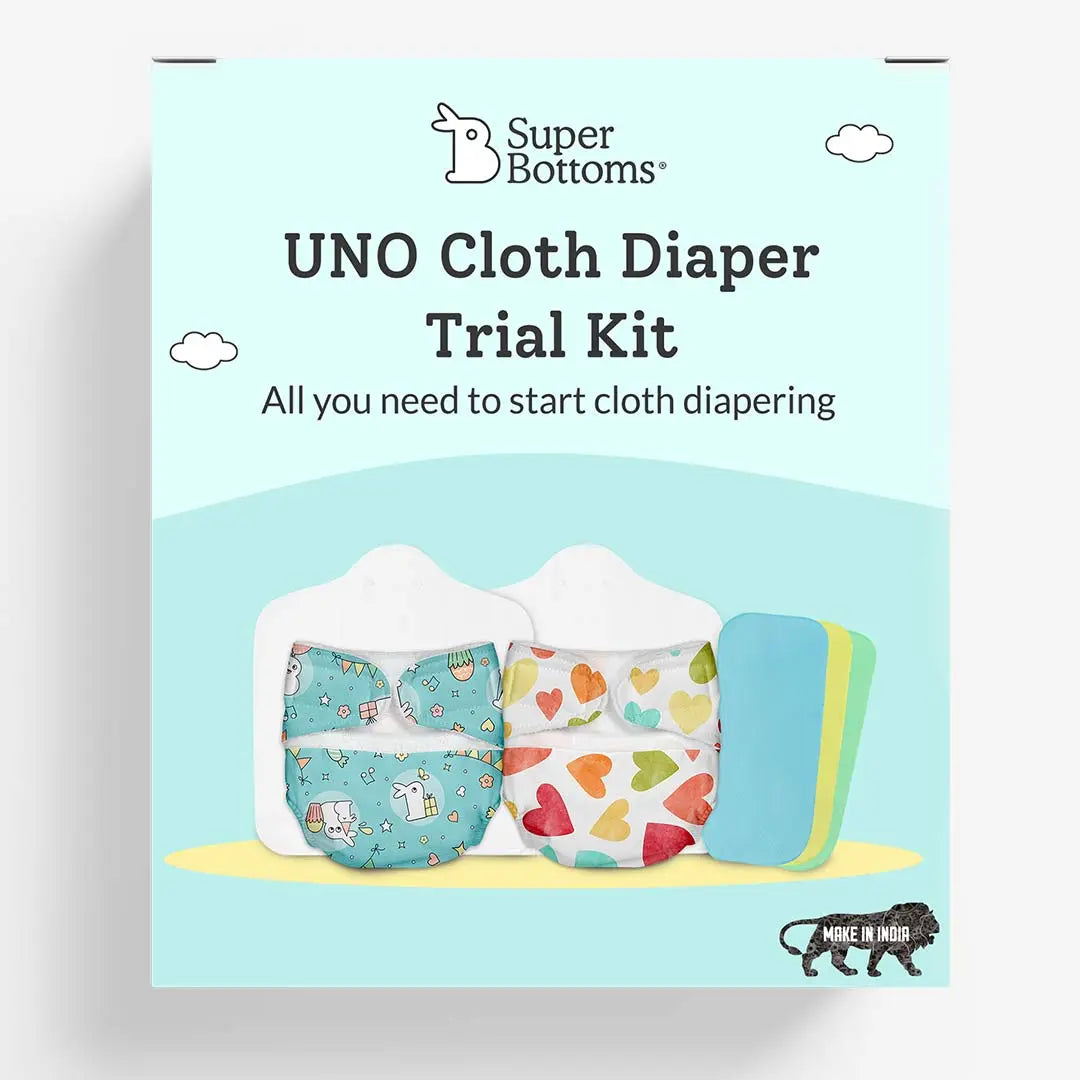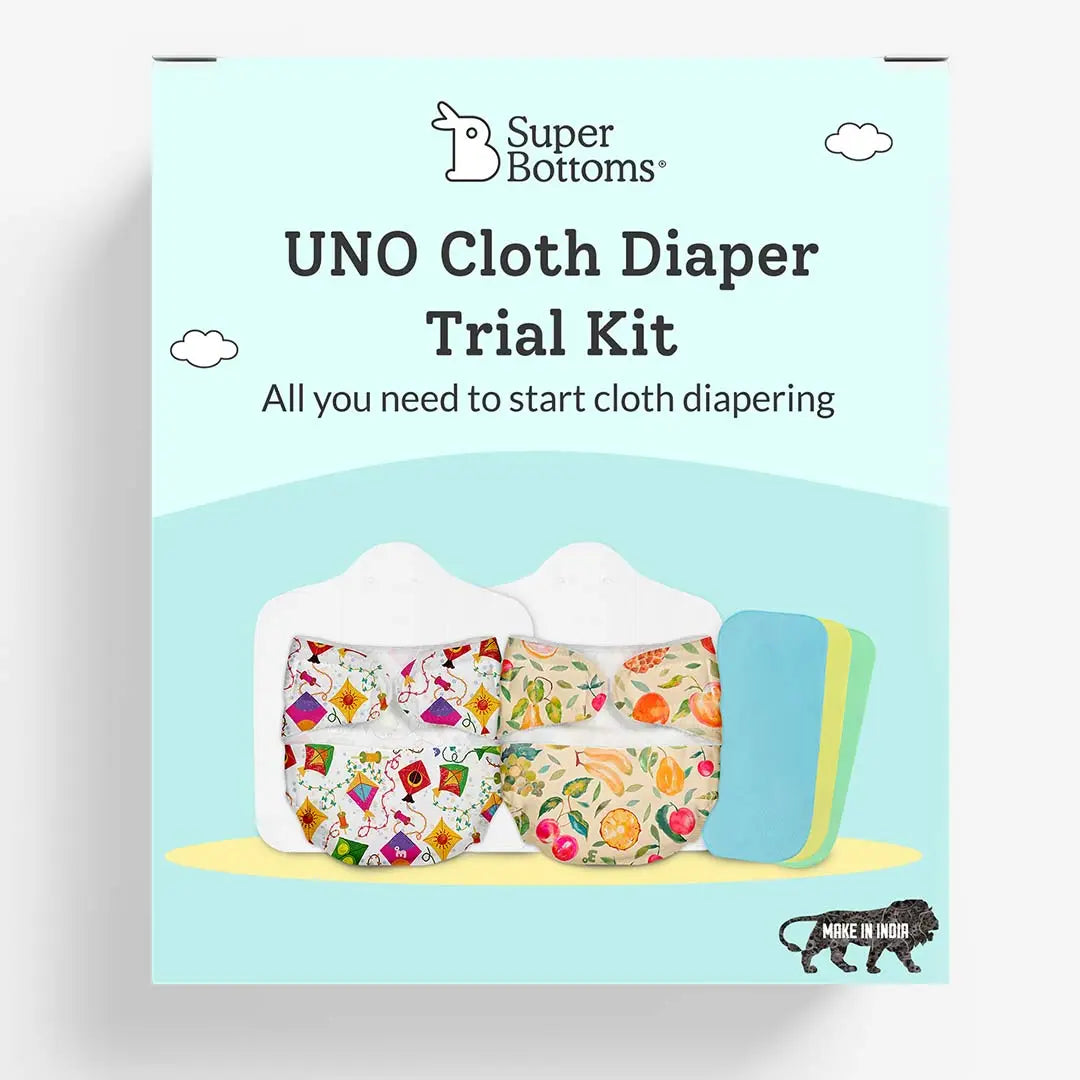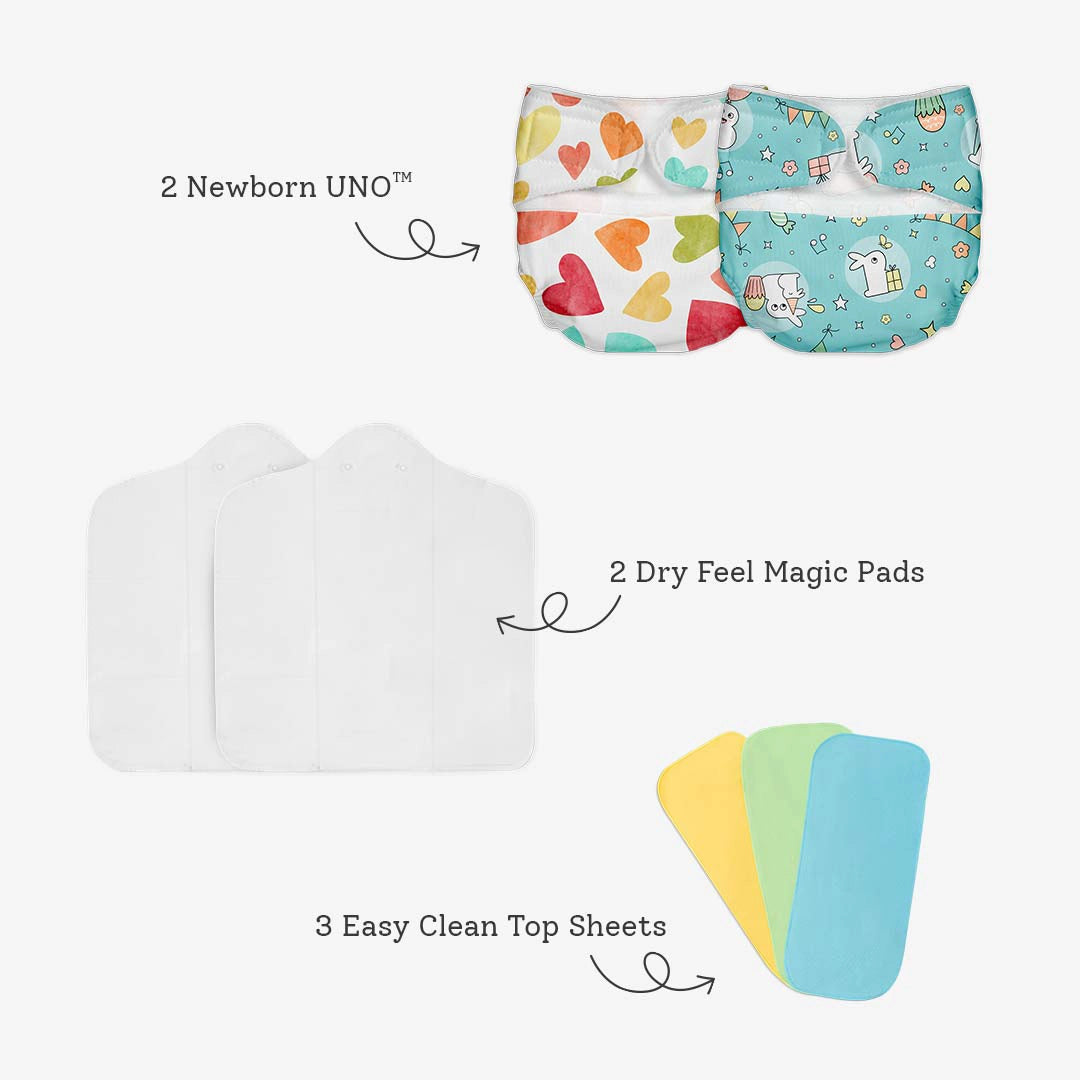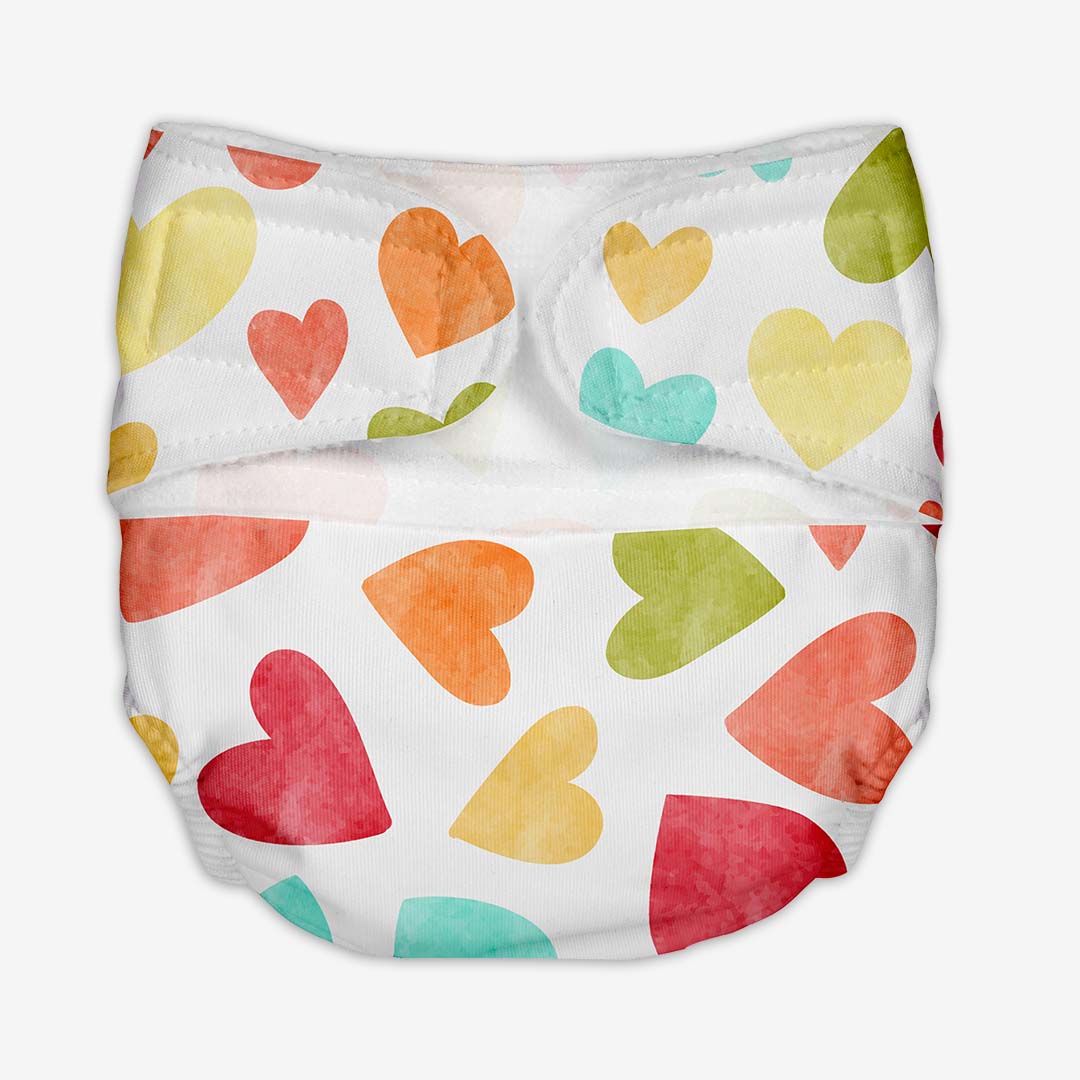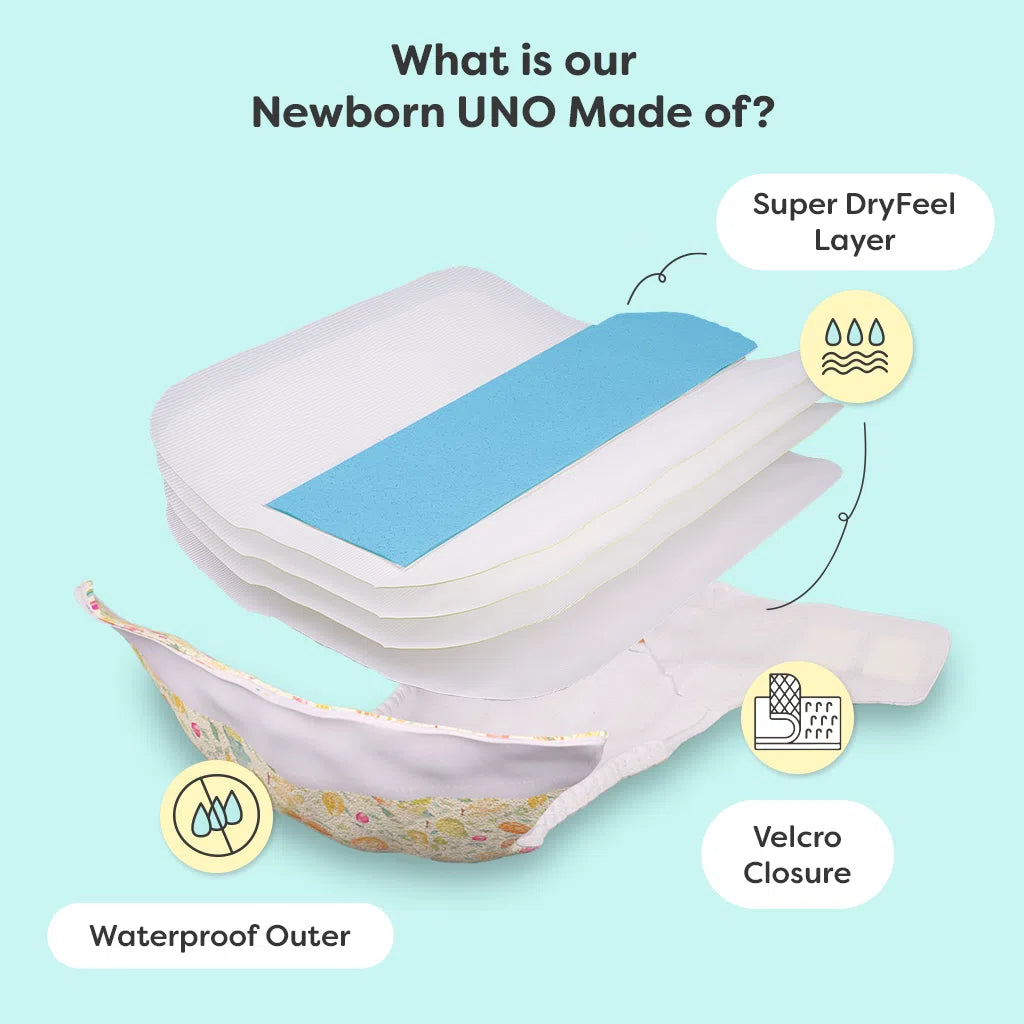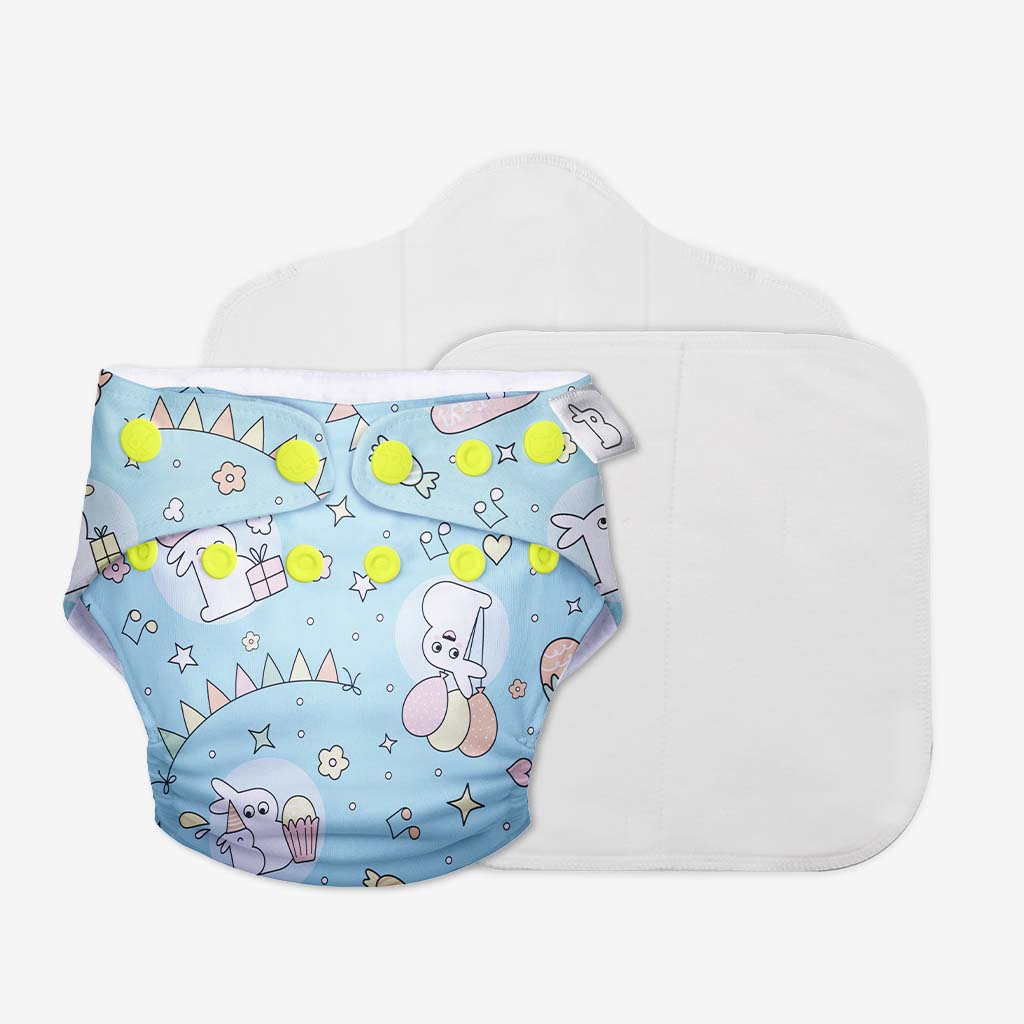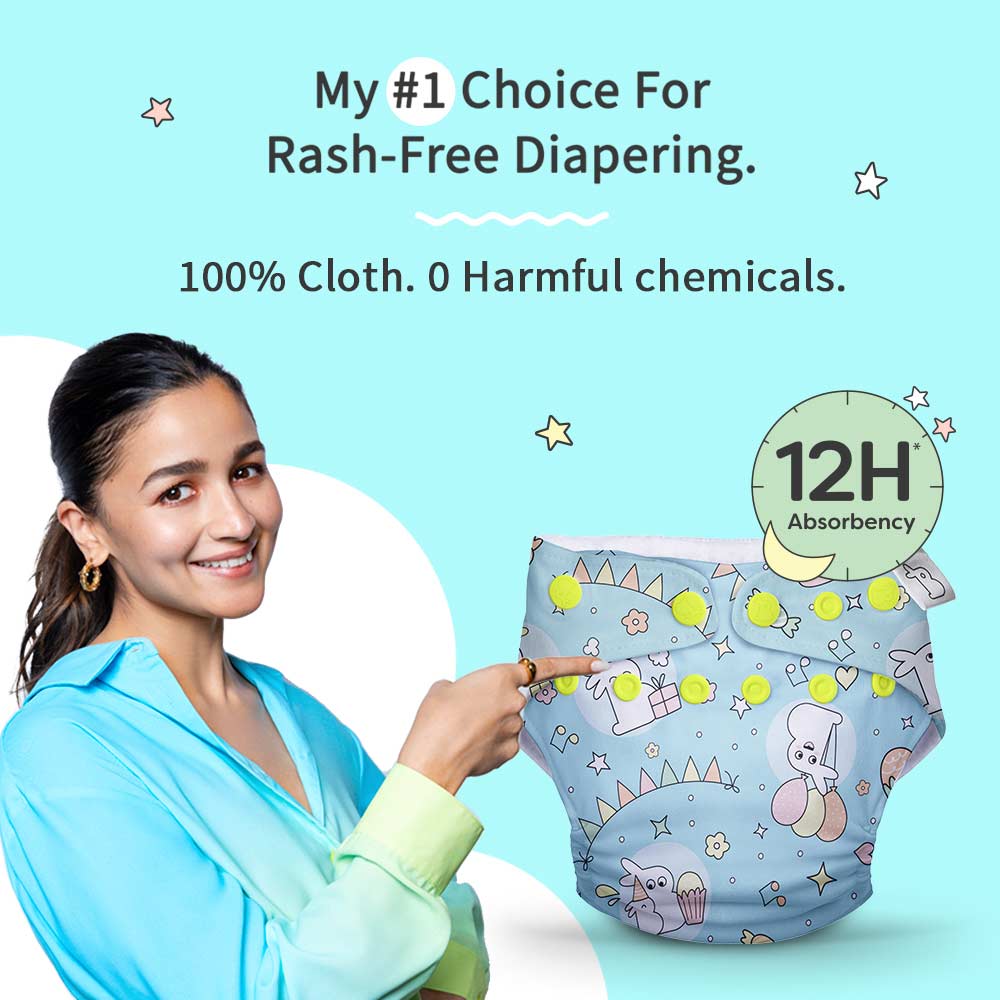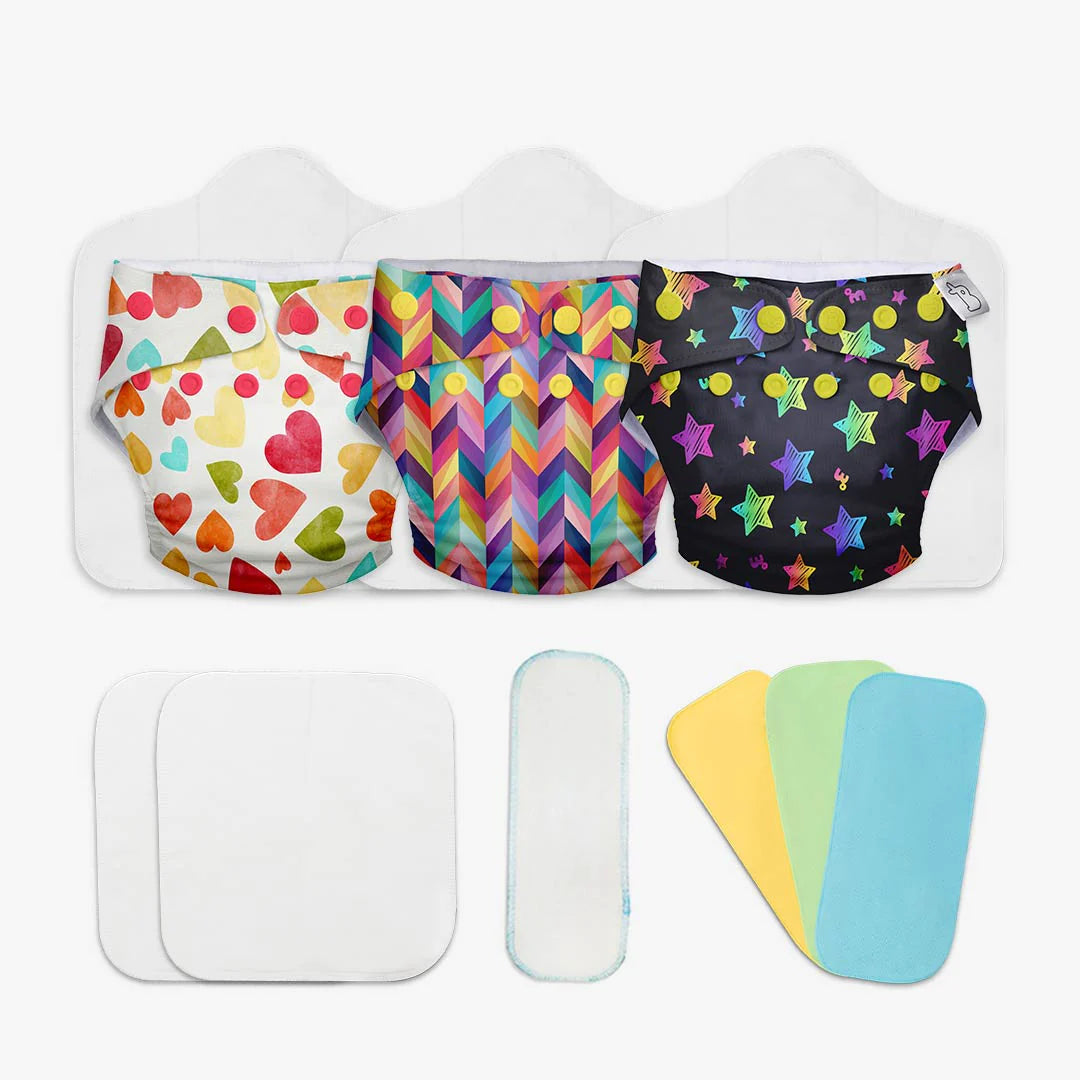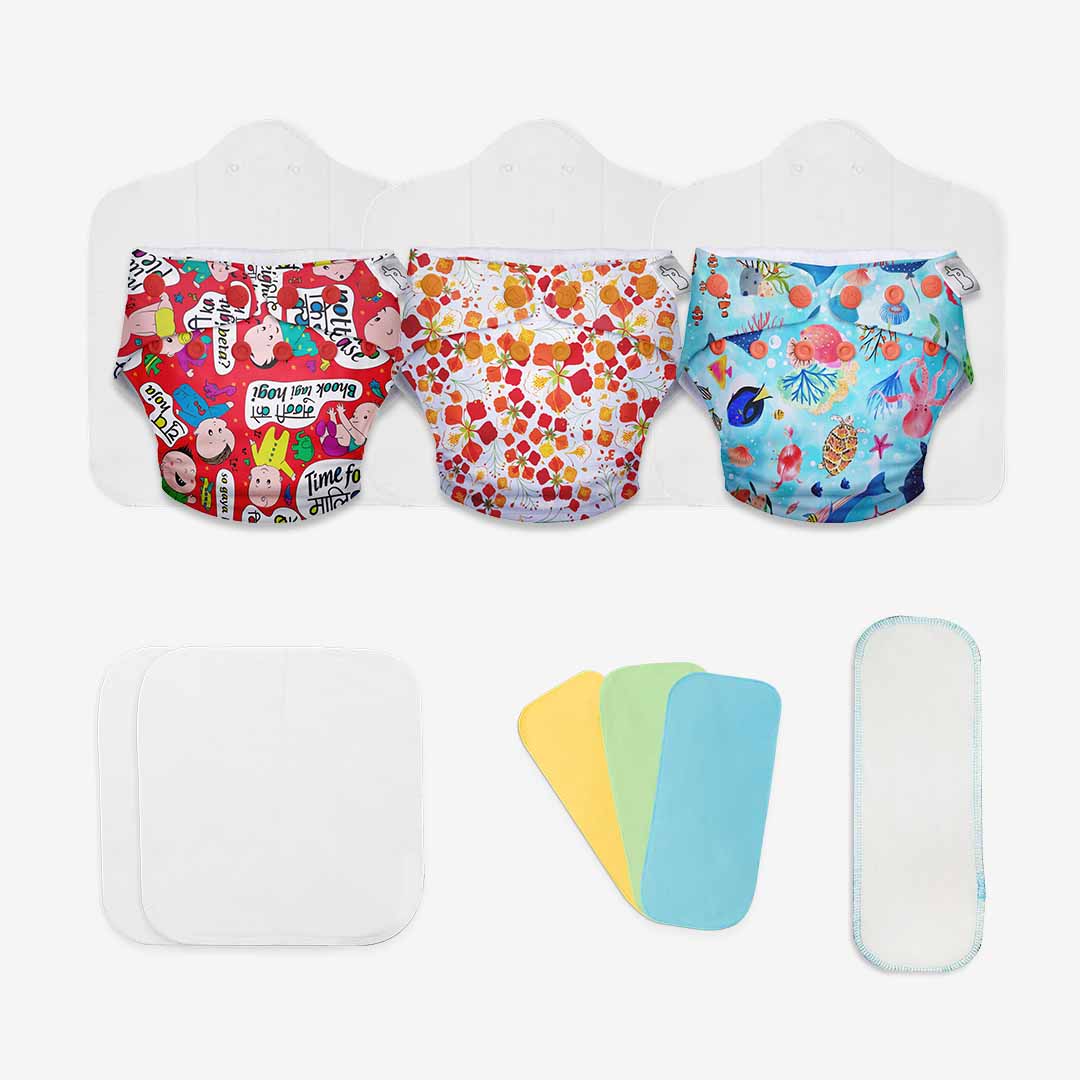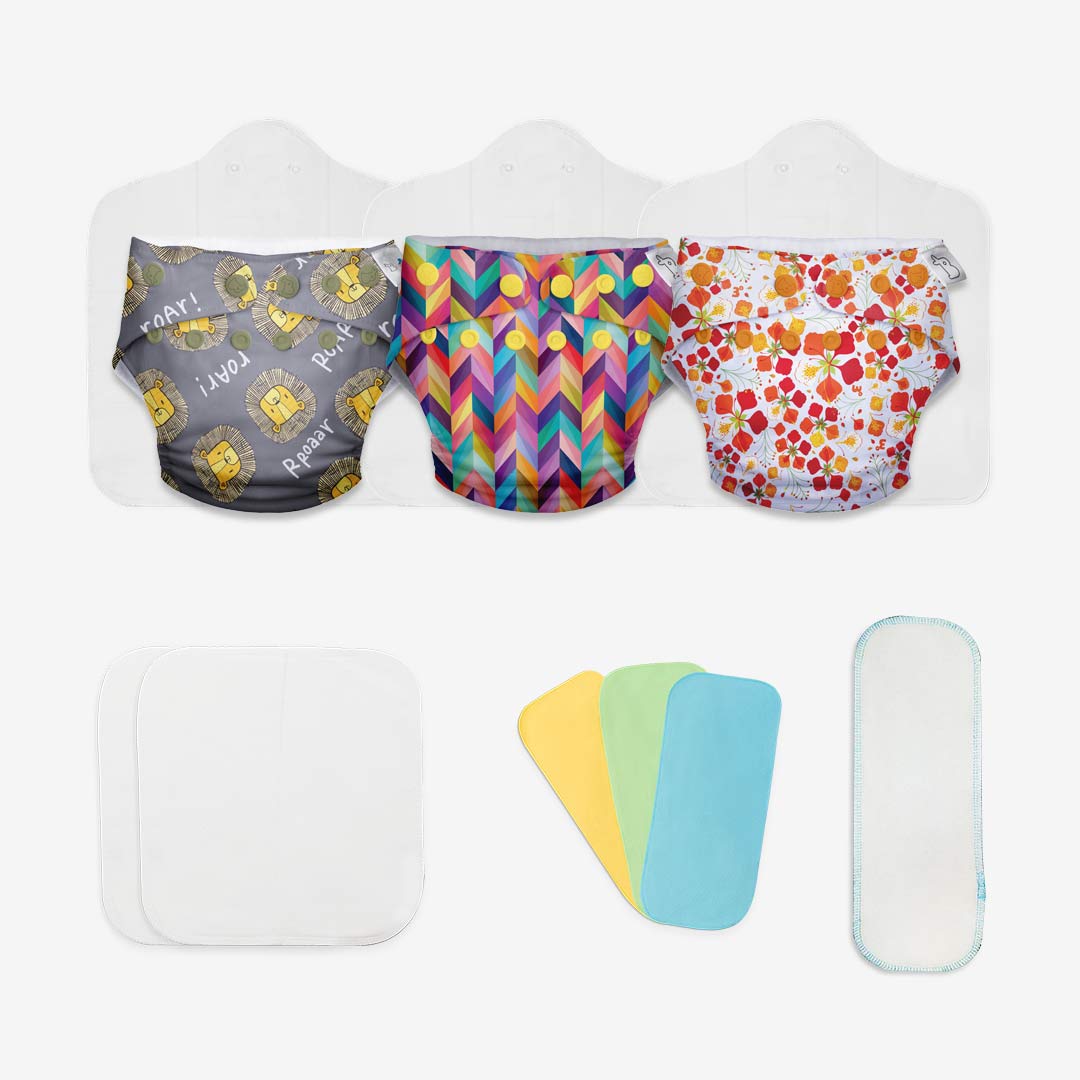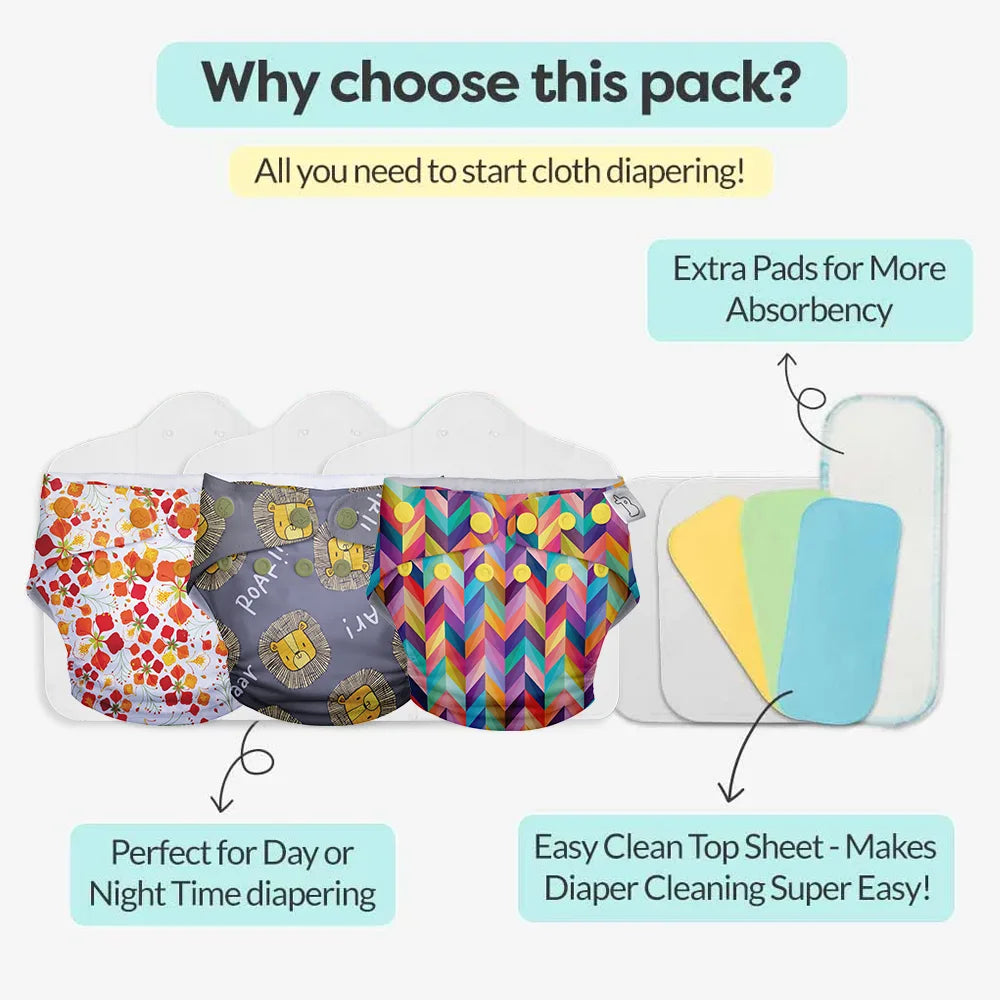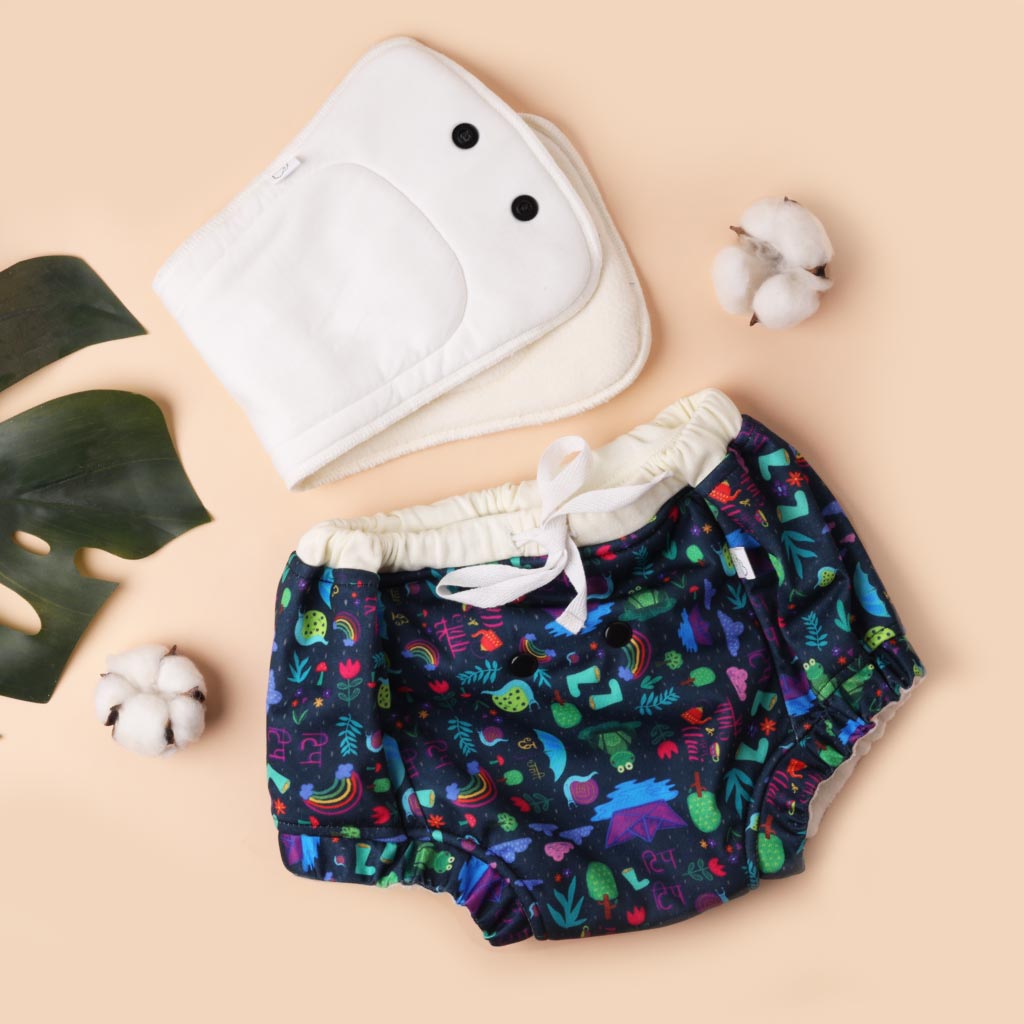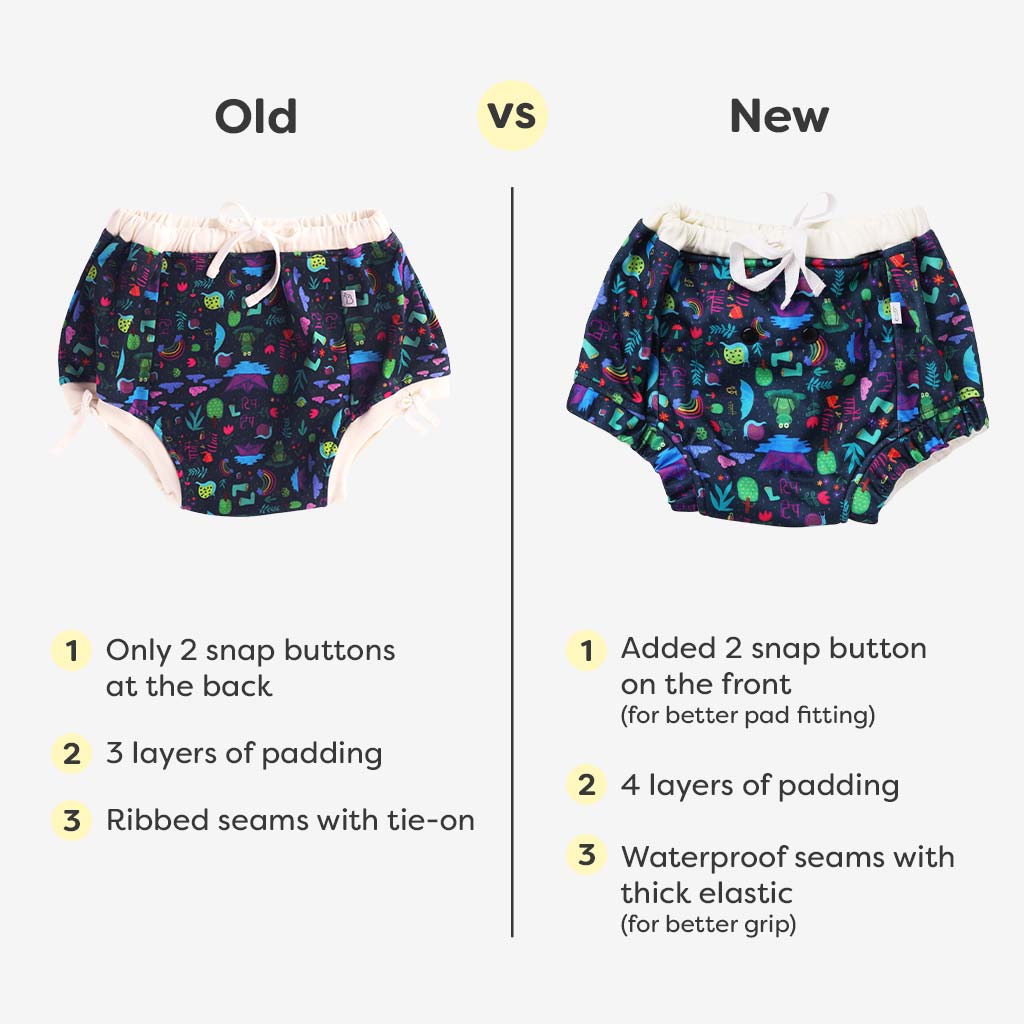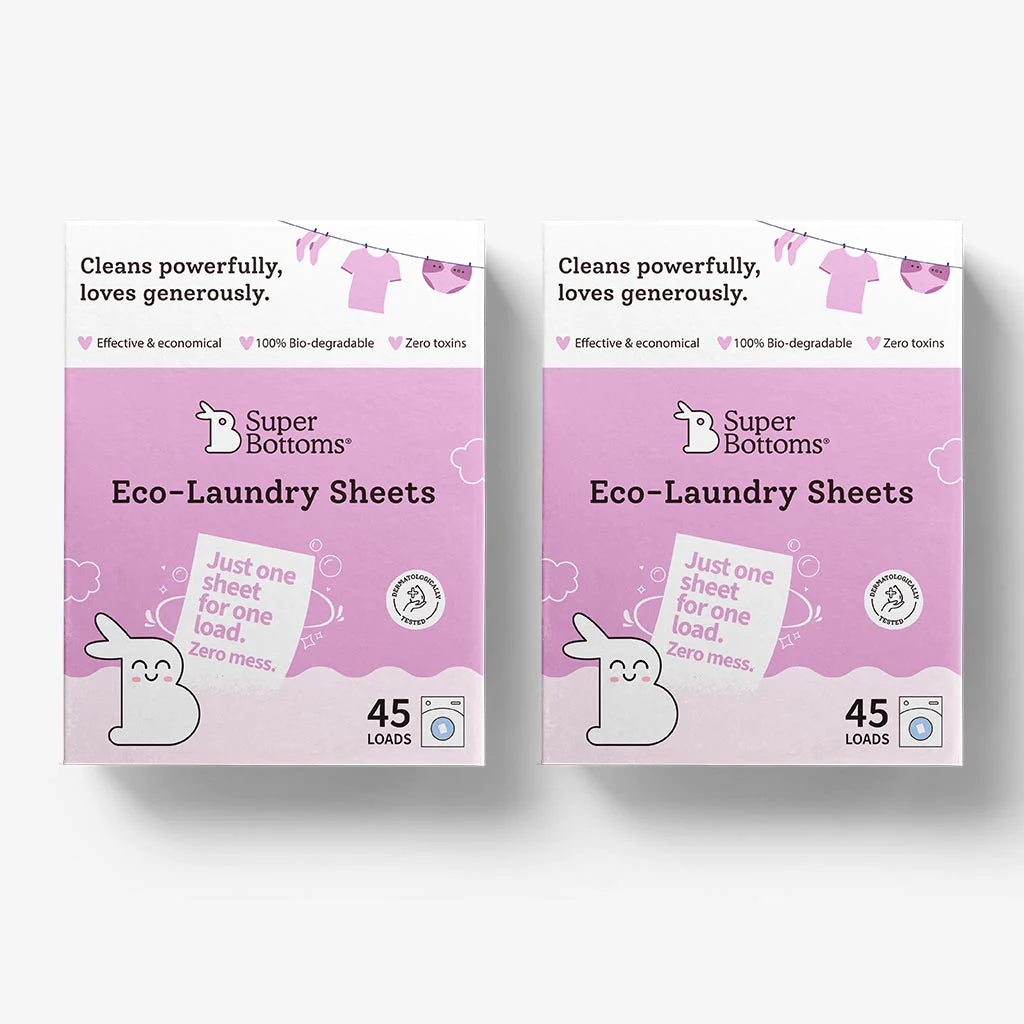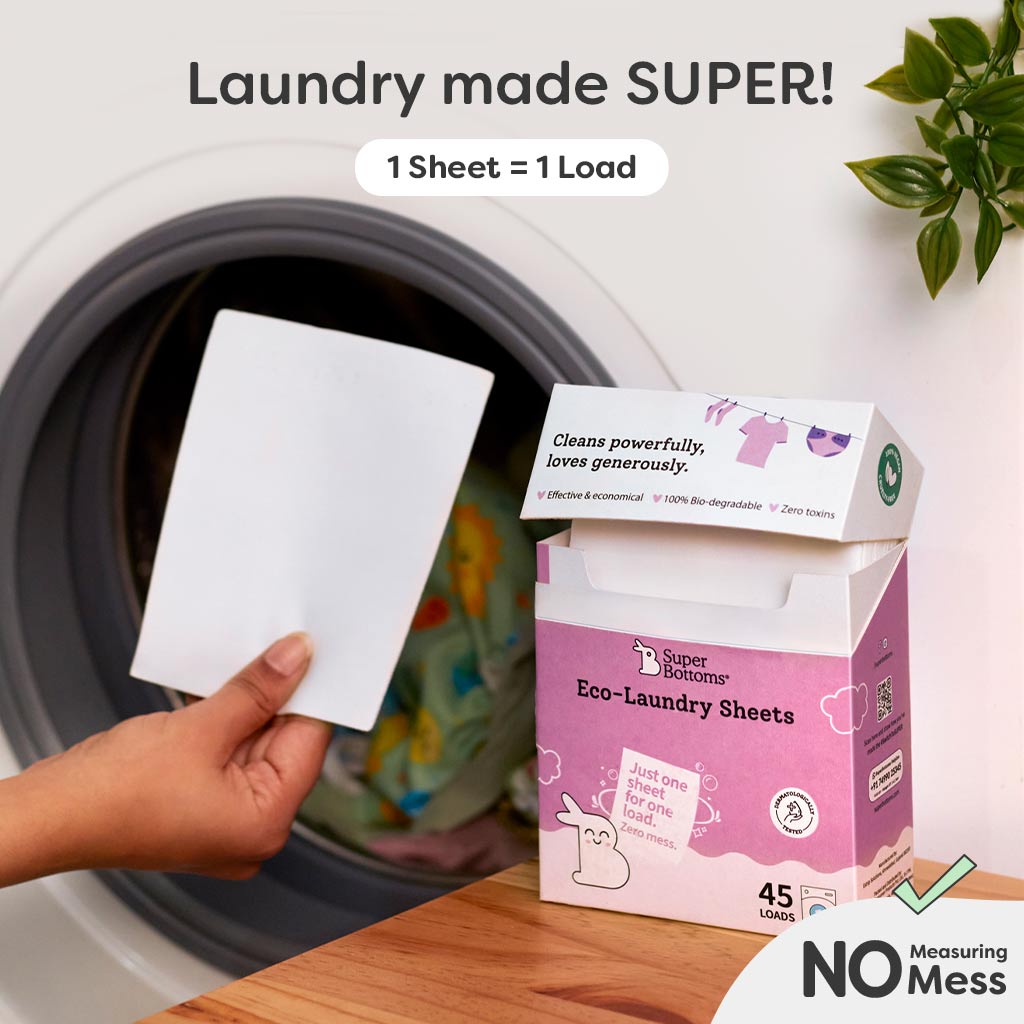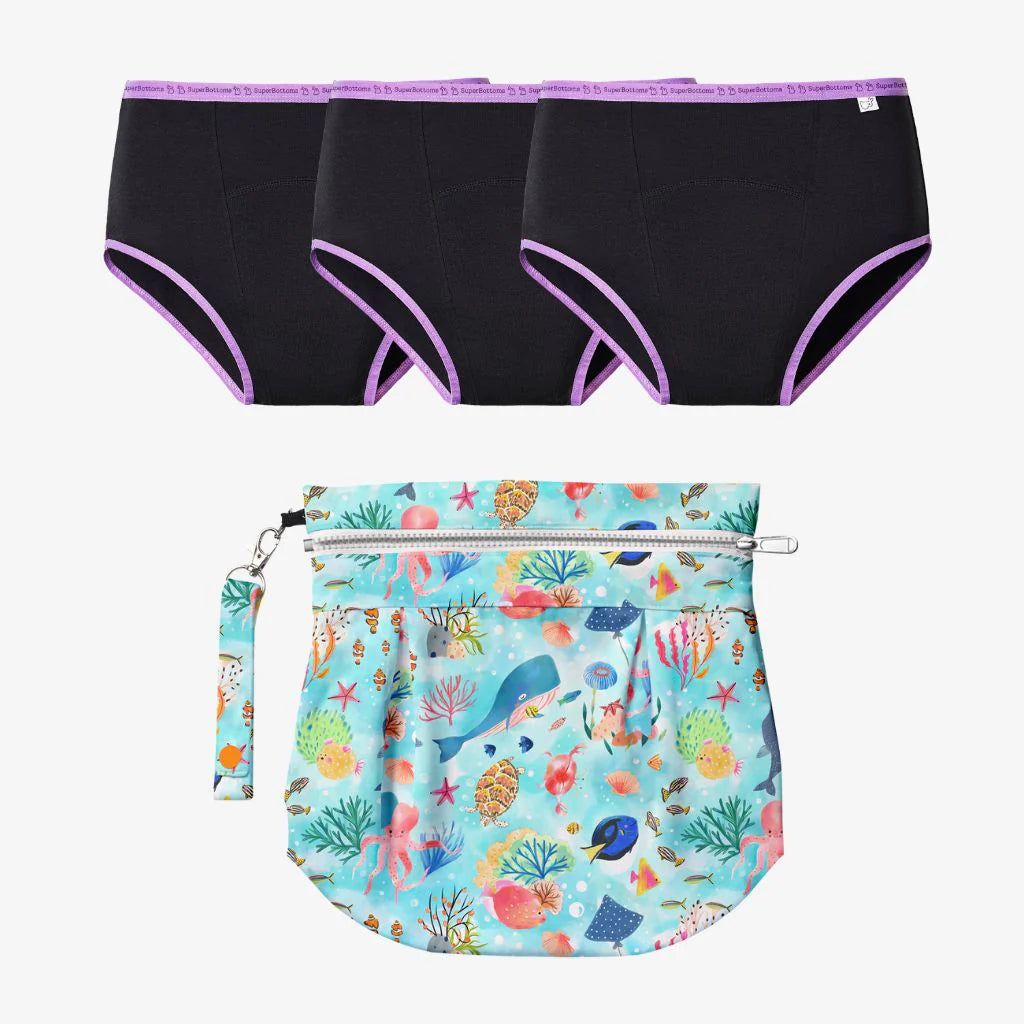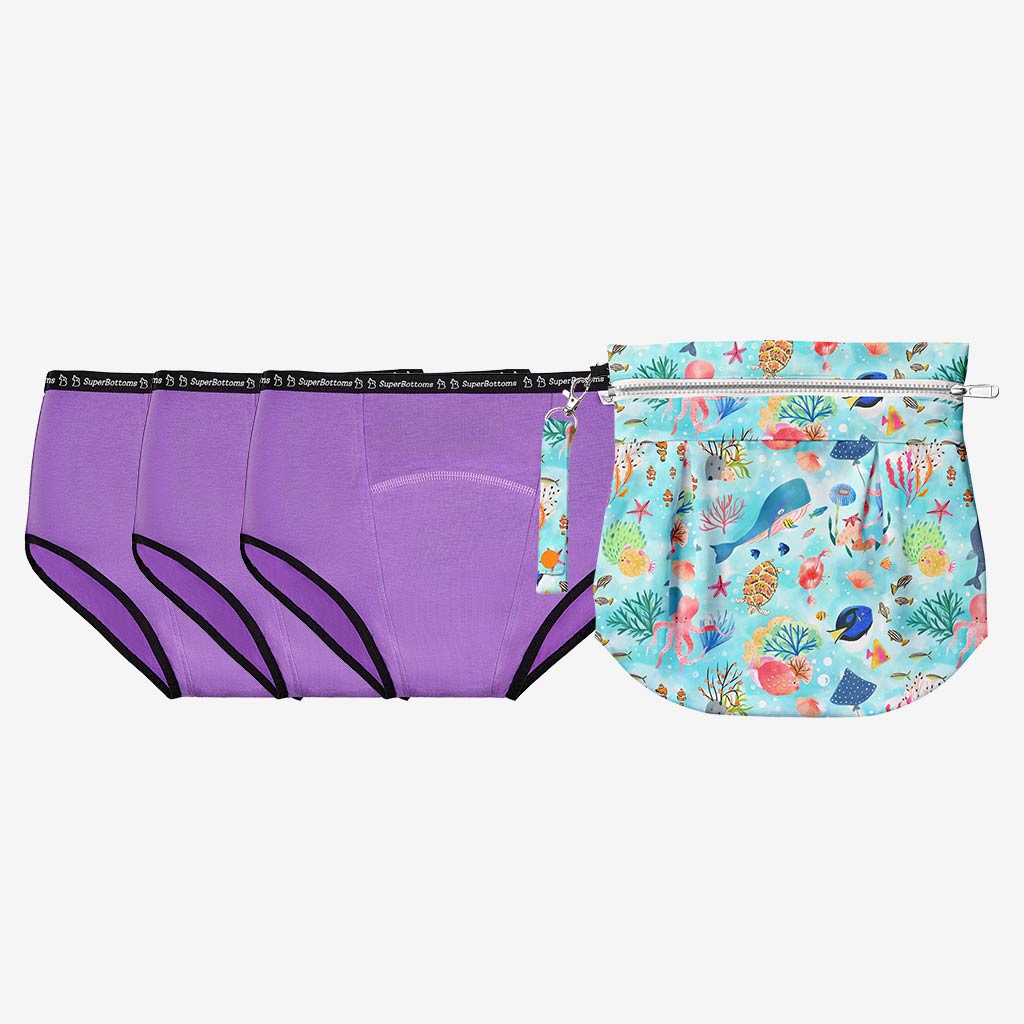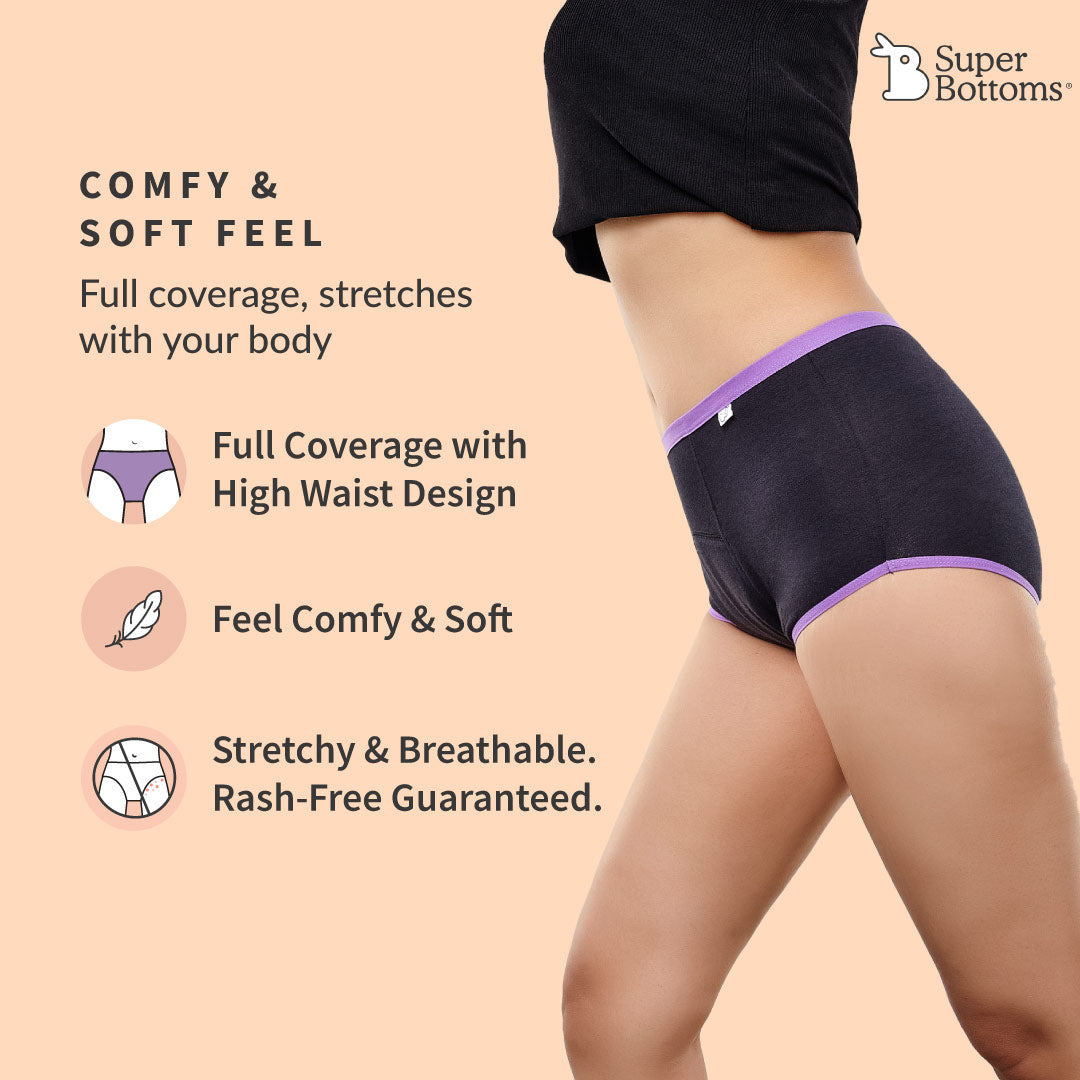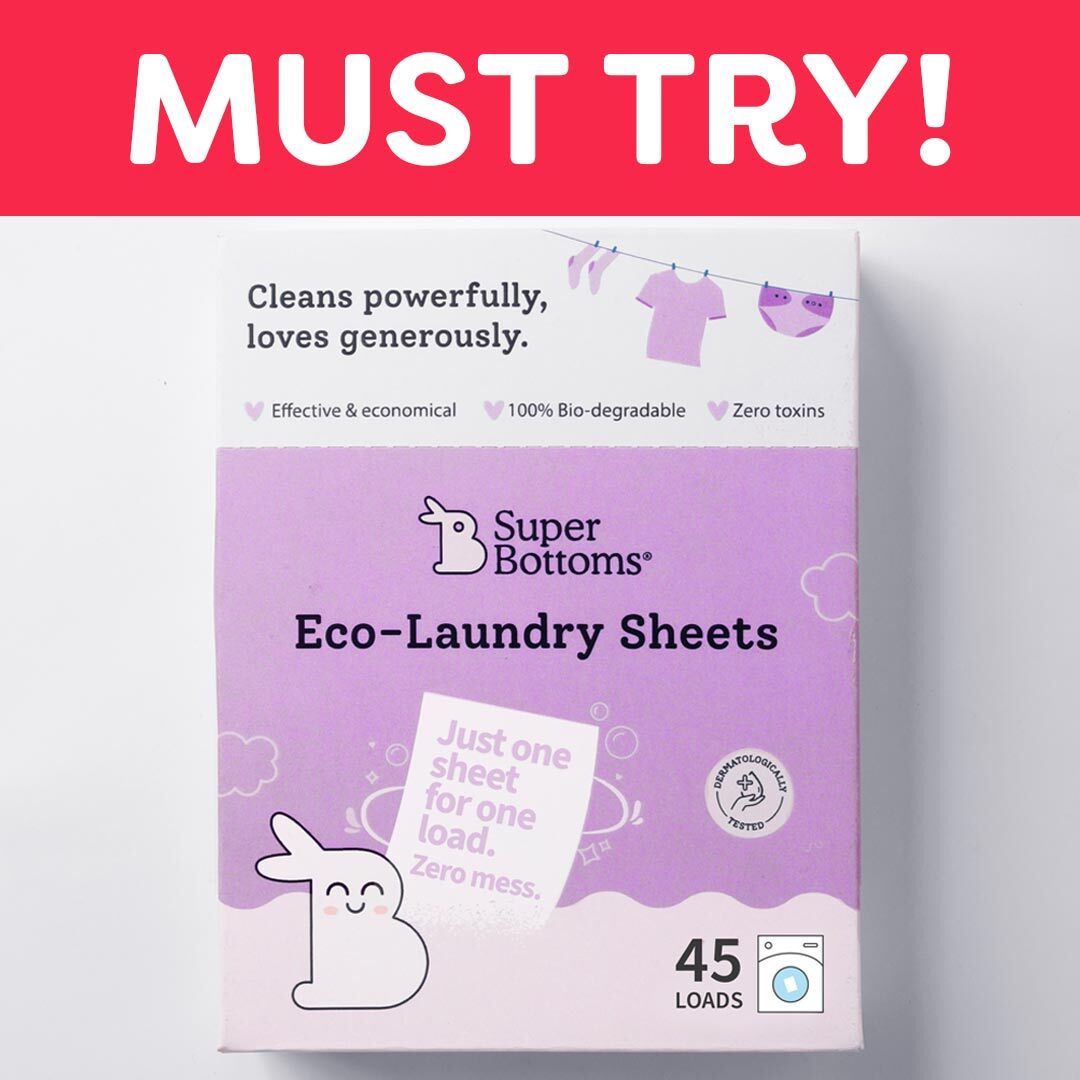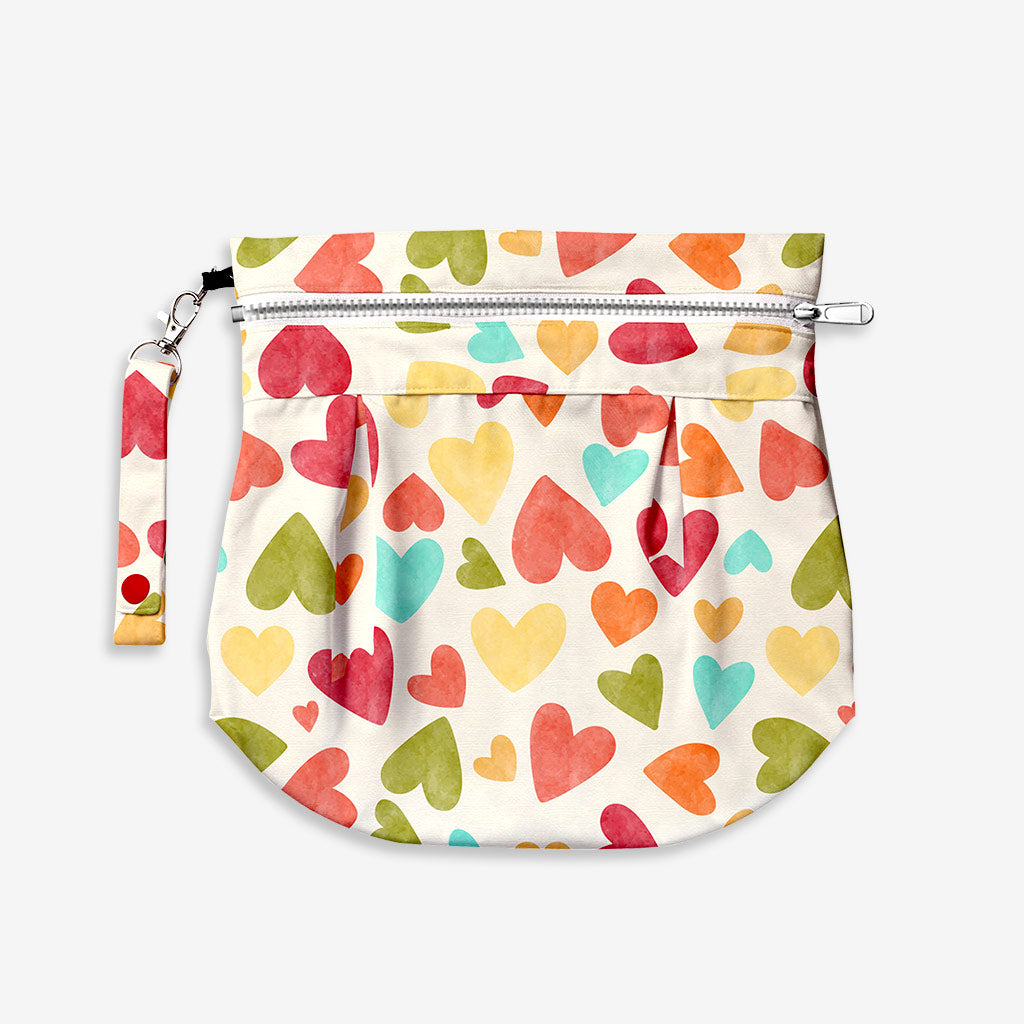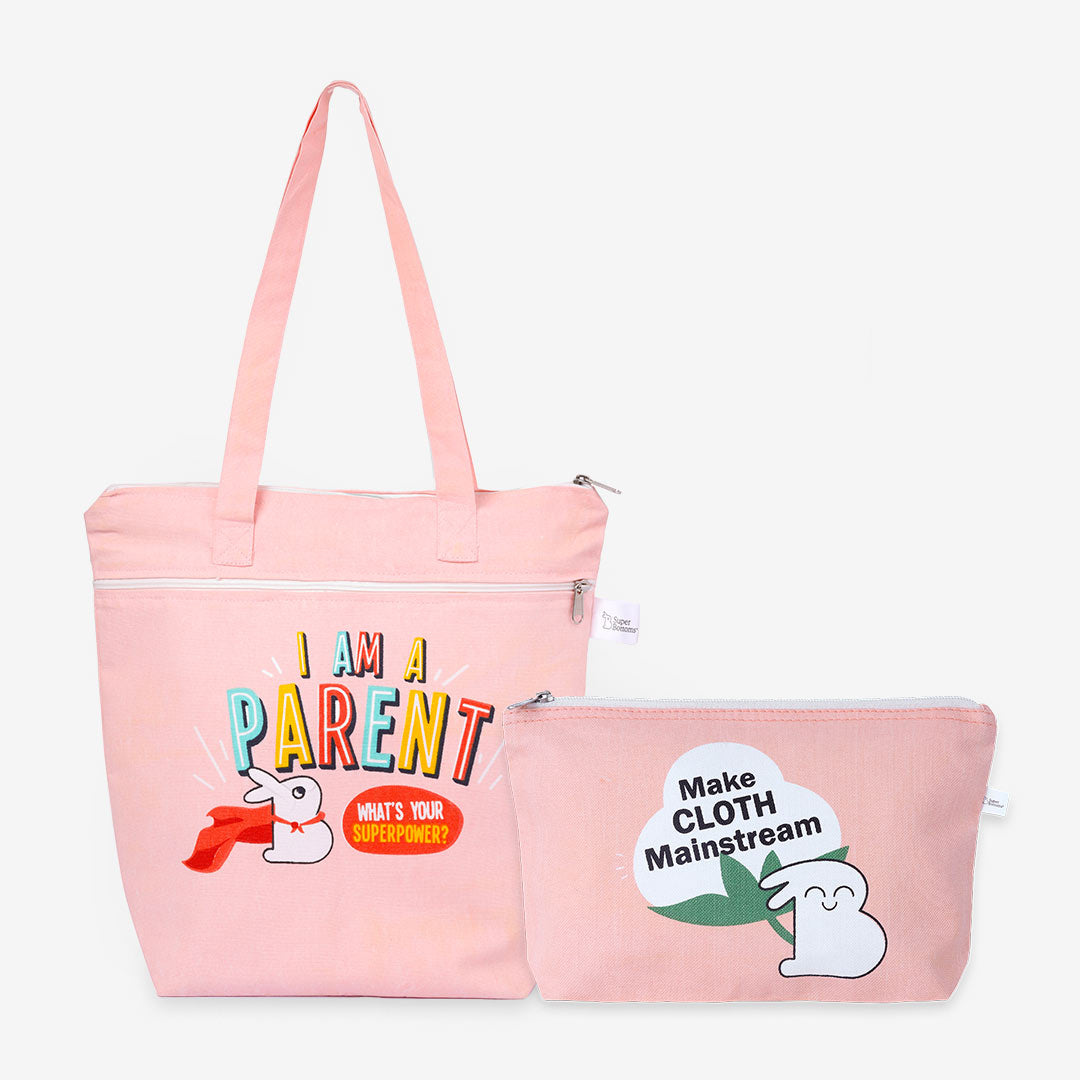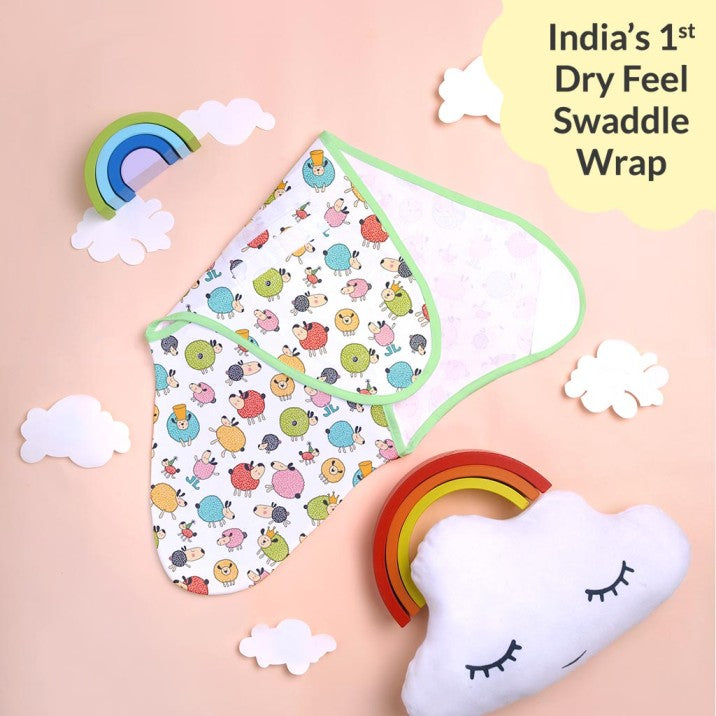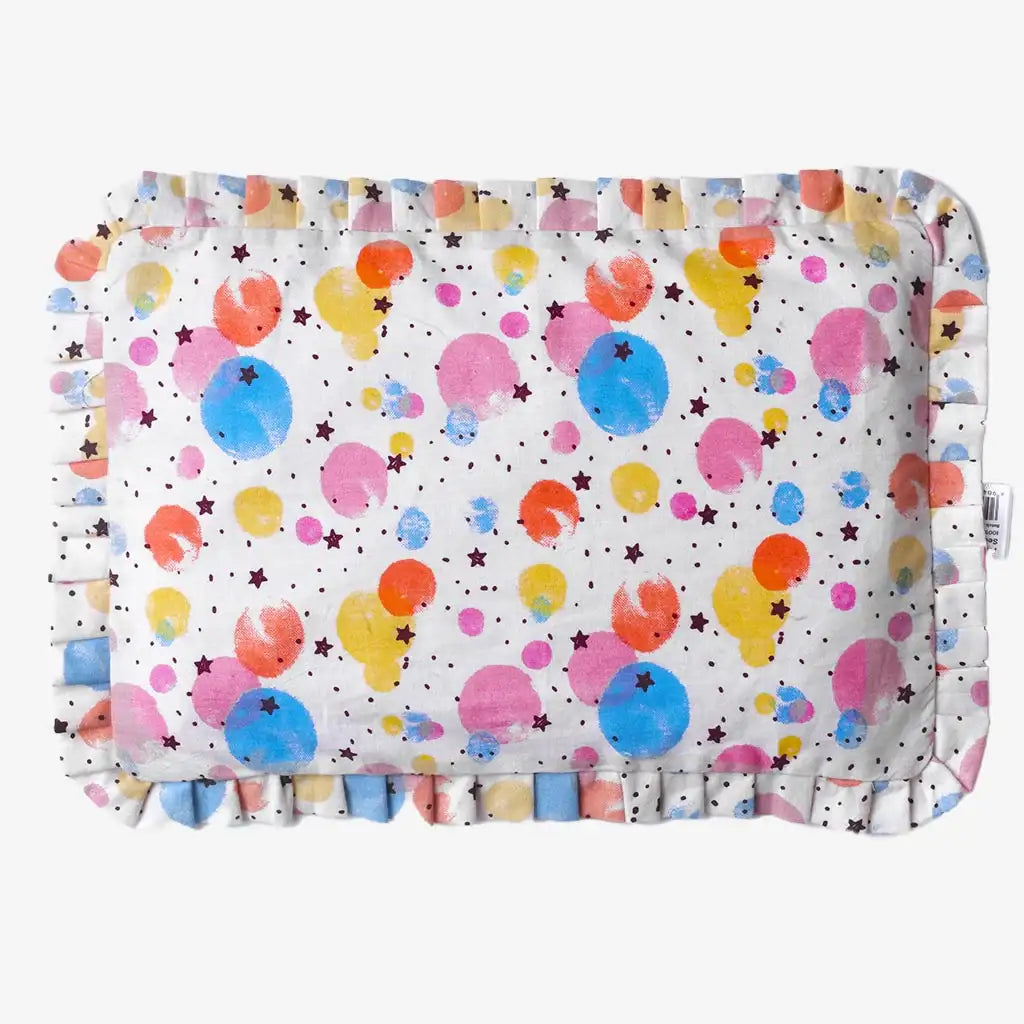In a world increasingly concerned about sustainability and eco-friendly choices, cloth diapers have made a triumphant comeback. They're not just the domain of nostalgic parents seeking a throwback to a bygone era; they're the practical choice for many environmentally-conscious families today. But if you're considering switching to cloth diapers or have already embraced them, you might wonder: How long do cloth diapers last?
The answer isn't as simple as you might think. Cloth diapering comes with its own set of considerations, from the type of baby cloth diaper you choose to your baby's age and activity level. To unravel this cloth diaper problem and help you make the most of your eco-friendly diapering journey, we're diving deep into the world of cloth diapers. Join us as we explore the factors influencing their longevity, tips for maximizing their use, and what to expect during those diaper-wearing hours.
Whether you're a seasoned cloth diaper pro or a curious parent considering the switch, this blog will equip you with the knowledge you need to make the most of your baby cloth diaper investment. So, in this article by SuperBottoms, let's begin our journey into the world of cloth diapers for babies and discover just how long cloth diapers last.
Types of Cloth Diapers
1. Prefold Diapers: Prefolds are rectangular pieces of absorbent fabric that require folding and fastening with pins or a Snappi closure. They are highly customizable in absorbency by adding extra layers where needed. Prefolds are cost-effective and can be used as inserts in pocket diapers or covers.
2. Flat Diapers: Flat diapers are large, square pieces of cloth folded into layers and secured with pins or a Snappi. They are versatile and dry quickly, making them a popular choice for parents on a budget or those looking for a minimalist approach.
3. Fitted Diapers: Fitted diapers are contoured and have elastic at the legs and waist for a snug fit. They are highly absorbent and excellent for overnight use, but they require a waterproof cover. Fitted diapers come in various materials, such as cotton, bamboo, or hemp, offering different absorbency levels.
4. All-in-One Diapers (AIO): AIO baby cloth diaper is the closest to disposable diapers in terms of convenience. They have an absorbent core sewn into the waterproof cover, eliminating the need for inserts or folding. AIO diapers are user-friendly but may take longer to dry due to their integrated design.
5. Hybrid Diapers: Hybrid diapers provide the flexibility of using cloth and disposable inserts. They are ideal for families who want the convenience of disposables on occasion without fully committing to them.
5 Things That Impact The Absorbency of a Cloth Diaper
In cloth diapering, absorbency is a critical factor in keeping your baby dry and comfortable. Several factors can influence how absorbent your cloth diaper for baby is, and understanding these factors is essential for successful cloth diapering. Here are seven things that impact the absorbency of a baby cloth diaper:
1. Age and Activity Level of Your Baby
As discussed earlier, the age and activity level of your baby affects the amount of urine they produce and how frequently you need to change their diaper. Newborns require less absorbency than active toddlers, who need highly absorbent options.
|
Limited Offers Ending Sooner - BUY NOW Now or never offers live on the SuperBottoms website. Take advantage of the never-before Good Value for Money on our offer page! Stock up on the bestselling UNO diapers, accessories & other popular SuperBottoms baby and mom products now available in deals and discounts. HURRY, the Deals are Live till stocks last! |
2. Absorbency and Layering
Absorbency is crucial for keeping your baby dry. Cloth diapers come with various absorbent materials like cotton, bamboo, or hemp. Choose the right inserts or soakers based on your baby's age and needs. For extra absorbency, layering multiple inserts or doublers can extend the diaper's use between changes.
3. Diaper Care and Maintenance
Proper care and maintenance of newborn cloth diapers are essential for preserving their absorbency. Avoid fabric softeners and harsh detergents that can leave residue and reduce absorbency. Regularly stripping and sunning diapers can help maintain their effectiveness.
4. Nighttime and Naptime Considerations
Nighttime and naptime present unique challenges due to longer wear times. To ensure a dry night, choose diapers with higher absorbency, such as fitted diapers or pocket diapers with extra inserts. Proper fit and containment are also crucial to prevent leaks during extended use.
5. Choosing the Right Cloth Diaper Type
The type of cloth diaper for the baby you choose can significantly impact absorbency. All-in-one (AIO) and All-in-Two (AI2) diapers often have integrated absorbent layers, while pocket diapers allow customization. Fitted diapers are known for their high absorbency and snug fit.
Achieving optimal absorbency in cloth diapers involves a combination of factors, including your baby's age, diaper type, proper care, and problem-solving skills. By addressing these aspects, you can ensure that your cloth diapers perform at their best, keeping your little one dry and comfortable throughout the day and night.
3 Effective Ways To Maximize the Longevity of Cloth Diapers
Here are three practical ways to maximize the longevity of your cloth diaper for your baby:
1. Proper Cleaning and Maintenance
Proper cleaning and maintenance are most important for extending the life of your cloth diapers.
Here's what you can do:
• Follow a Good Washing Routine: Develop a consistent washing routine. Rinse off solid waste and store soiled diapers in a dry pail until wash day. Use a recommended detergent free of additives like fabric softeners and fragrances, which can affect absorbency.
• Avoid Excessive Heat: High heat can break down the fibers in your cloth diapers. Use warm or cold water for washing and opt for line-drying or a low-heat dryer setting. Avoid exposing your diapers to direct sunlight for extended periods, which may lead to fading.
2. Choose Quality Cloth Diapers
Investing in high-quality cloth diapers can significantly impact their longevity.
Here's what to consider:
• Choose Durable Materials: Look for cloth diapers made from durable materials like cotton, bamboo, or hemp. These materials tend to hold up well over time and withstand multiple washes.
• Adjustable Sizing: Consider cloth diapers with flexible sizing options. Many modern baby cloth diapers are designed to grow with your baby, which means you can use them from infancy through the toddler years, maximizing their lifespan.
3. Rotate and Use Inserts Wisely
Rotating your cloth diaper stash and using inserts strategically can help distribute wear and maintain absorbency.
Here's how:
• Rotate Your Diapers: Avoid overusing a specific set of cloth diaper for baby. By rotating through your stash, you distribute wear evenly among your diapers. This can extend their overall lifespan.
• Customize Absorbency: Adjust the number of inserts or doublers based on your baby's age and needs. Using multiple layers can boost absorbency for heavier wetters without overburdening a single diaper.
• Spot Clean When Possible: For minor wetness or small accidents, consider spot cleaning and reusing diapers to reduce the frequency of washing, which can contribute to wear and tear.
By implementing these effective strategies, you can ensure that your cloth diapers remain in excellent condition for an extended period, saving you money and reducing your environmental footprint.
Your Cloth Diaper Journey Begins - SuperBottoms FreeSize UNO
Your Cloth Diaper Journey Begins with SuperBottoms FreeSize UNO, the ultimate choice for modern parents seeking eco-friendly diapering solutions. What sets SuperBottoms apart is its innovative SnapEasy System, making diaper changes a breeze while ensuring a snug fit every time. With the Super DryFeel layer, your baby stays dry and comfortable, even during extended wear. These diapers are not only gentle on the environment but also your wallet, as they are reusable and washable over 300 times. SuperBottoms takes pride in being the trimmest baby cloth diaper, fitting effortlessly under your baby's clothes, and features a waterproof exterior to prevent leaks. The adjustable sizing, almost magical in its versatility, means this diaper grows with your child, accommodating both a 3-month-old and a 3-year-old comfortably. Embrace the convenience, sustainability, and affordability of SuperBottoms FreeSize UNO as you embark on your cloth diapering journey.
In Conclusions:
Cloth diapers offer an eco-friendly, cost-effective, and customizable diapering solution for your little one. Understanding the factors that influence how long cloth diapers last, such as the type of diaper, your baby's age and activity level, and proper care, empowers you to make the most of your cloth diapering journey. Considering these factors, you can ensure that your cloth diapers provide hours of comfort and protection while contributing to a more sustainable world. So, whether you're a seasoned pro or a newcomer to the world of cloth diapering, remember that with the right choices and care, cloth diapers can meet your baby's needs and exceed your expectations.
Frequently Asked Questions
Q1: How often should I change cloth diapers?
A: The frequency of reusable cloth diaper changes varies based on your baby's age and activity level. On average, change newborn diapers every 2-3 hours, infants every 3-4 hours, and toddlers every 2-3 hours. Adjust as needed for heavy wetters or overnight use.
Q2: Can I use cloth diapers overnight?
A: Yes, cloth diapers can be used overnight. Choose highly absorbent options like fitted diapers or pocket diapers with extra inserts. Ensure a secure fit to prevent leaks during long stretches of wear.
Q3: How many cloth diaper for baby do I need?
A: For full-time cloth diapering, a stash of 20-30 cloth diapers is typically sufficient. Adjustable-size diapers can accommodate your baby as they grow, reducing the need for frequent size changes. Adjust based on laundry frequency and preferences.
MESSAGE FROM SUPERBOTTOMS
Hola, New Moms and Dads! We at SuperBottoms ensure you have the best and safest products for your babies, no matter what corner of India or the world you are in. SuperBottoms is appropriate for your baby's sensitive skin throughout their Cloth Diapers journey, in any season, and also offers Padded Underwear for women. If you reside in Canada, Kuwait, the United States, Qatar, Hawaii, Bahrain, Armenia, the United Arab Emirates, or the Philippines, SuperBottoms is an essential product for you and your child.



